Bansko is a town where mountains shape the rhythm of life. Mornings begin with mist rising off the Pirin peaks, afternoons flow between cobblestone streets and cozy cafés, and evenings end in mineral hot springs or firelit mehanas. Once known mainly as Bulgaria’s ski capital, it’s become one of Europe’s most surprising hubs for digital nomads—seasonal, affordable, and surrounded by wild landscapes.
For nomads, Bansko offers something rare: a tight-knit community that gathers around coliving houses and coworking spaces, yet still leaves plenty of room for solitude in nature. Winters mean skiing or snowboarding; summers mean hiking trails, mountain lakes, and outdoor festivals. The pace is slower than Sofia or Plovdiv, but that’s exactly the point—work feels steady here, and life feels spacious.
In this complete guide, we’ll share everything you need to know about living, working, and exploring in Bansko: where to stay, the coworking and coliving scene, what to eat, and what to do when you close your laptop—from ski slopes to alpine trails to village hot springs.
Why Bansko?
Bansko is unusual among digital nomad destinations. For such a small mountain town, the community here is remarkably large—hundreds of remote workers gather each season, drawn by the legacy of Coworking Bansko and the annual Nomad Fest. The result is a place where it’s easy to plug into a network of like-minded people, yet the town’s size keeps it approachable. Nothing is more than a 20-minute walk, and you don’t need a car or bike to move between colivings, cafés, coworking spaces, or the ski lift.
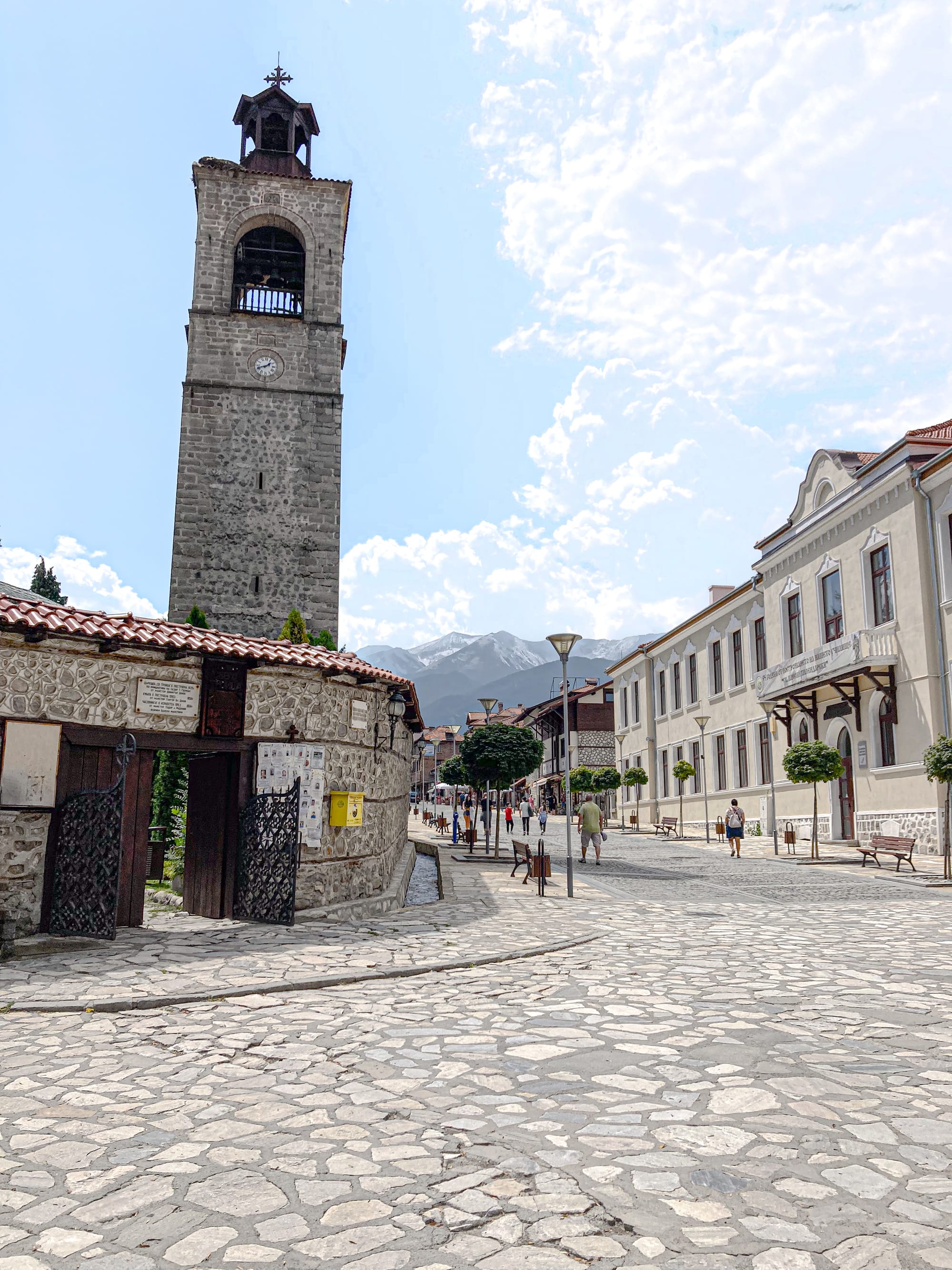
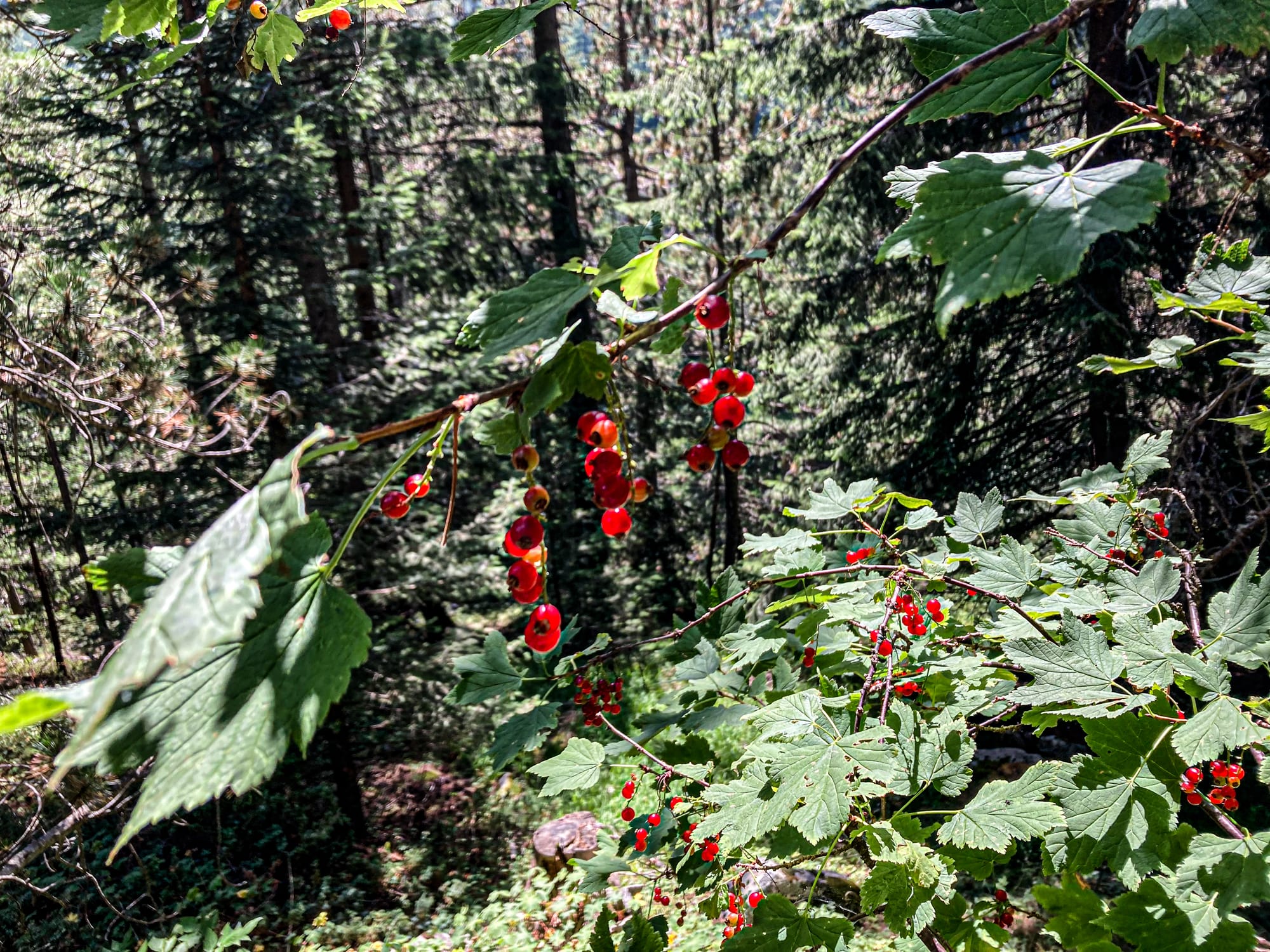
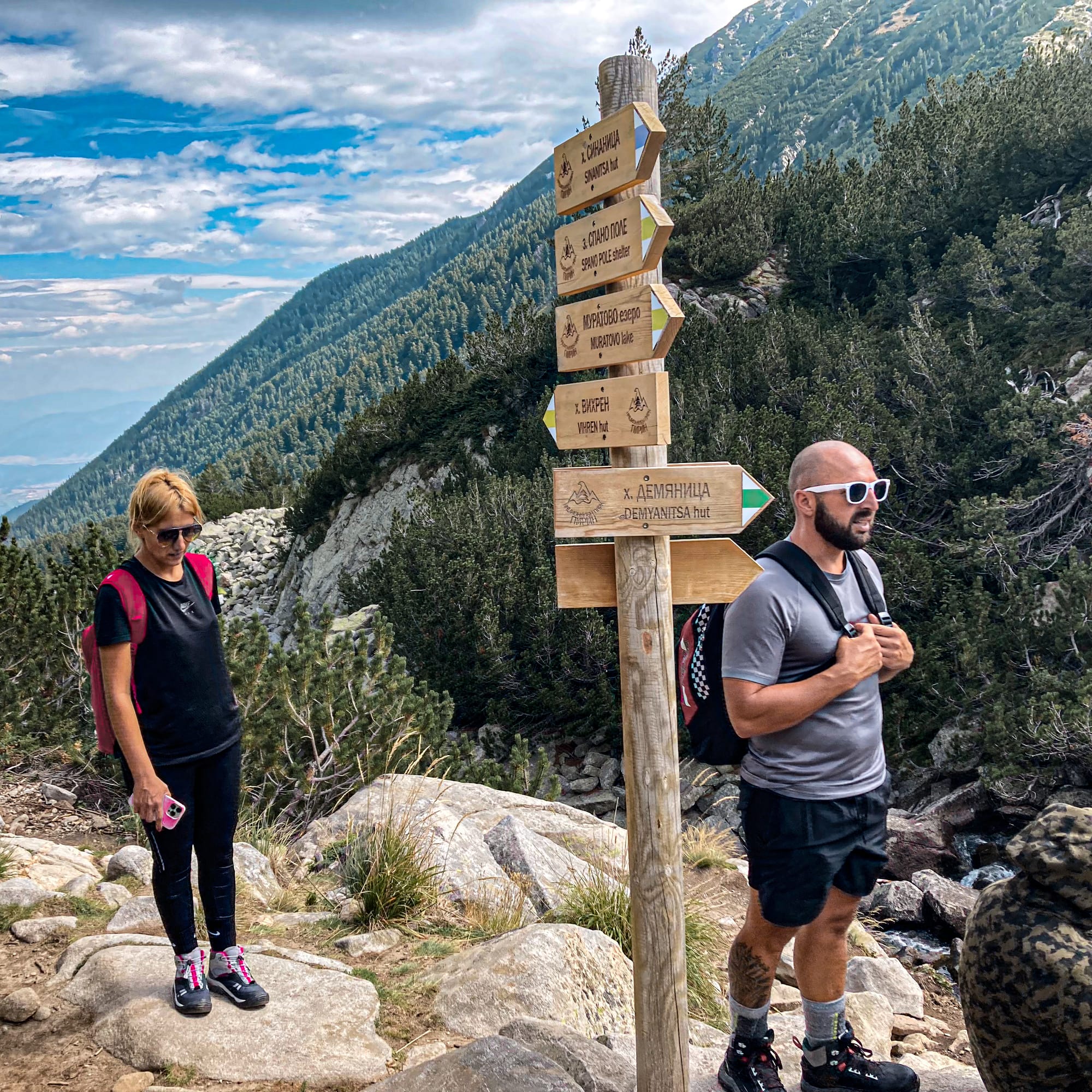
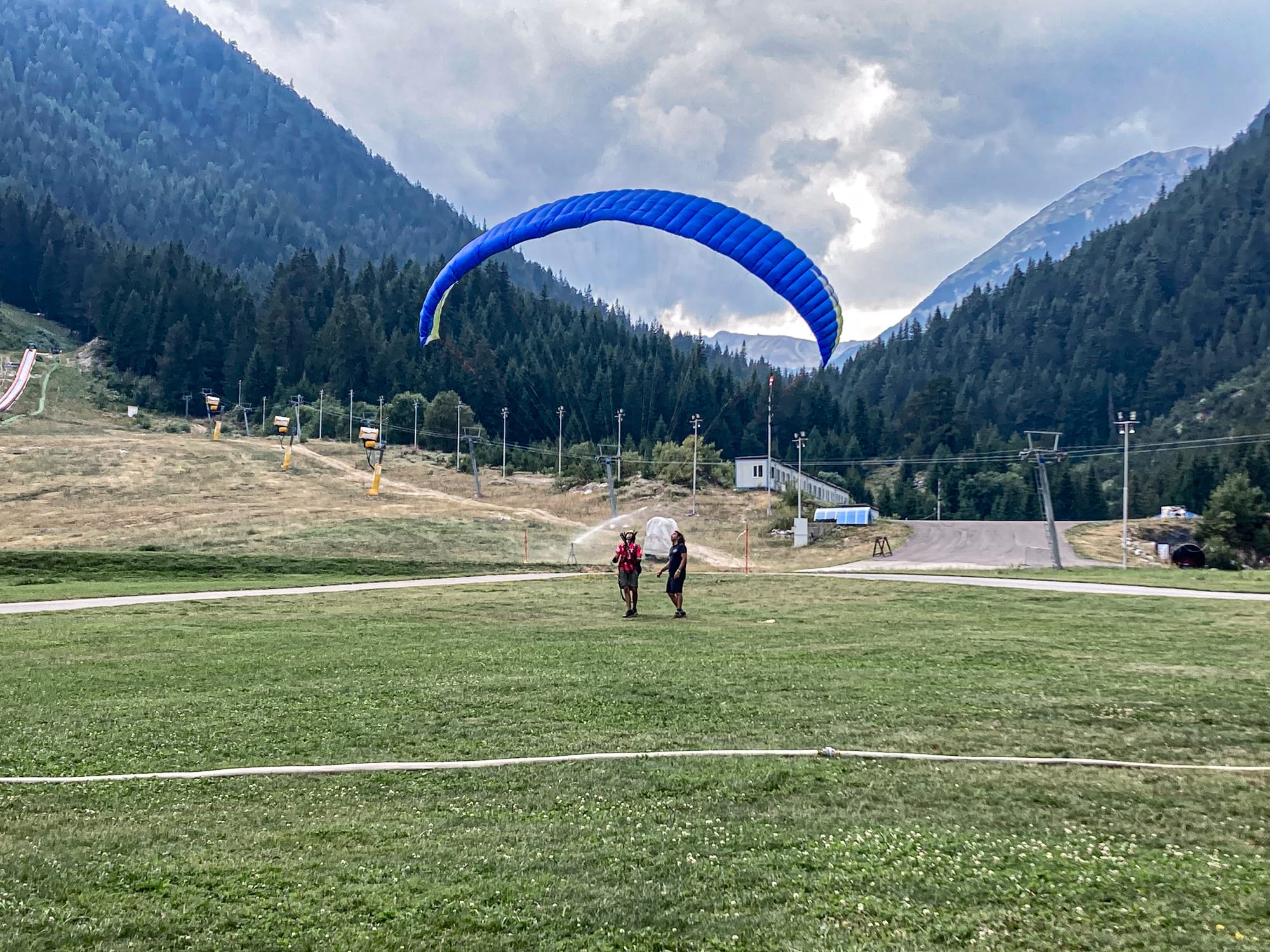
What makes Bansko stand out, though, isn’t just the accessibility of its nomad infrastructure—it’s the nature. The Pirin Mountains rise dramatically above town, offering both winter skiing and summer hiking. In colder months, you can work by day and ski by afternoon; in summer, trails lead to alpine lakes, meadows, and forests heavy with fruit. There’s a sense of health and groundedness that comes from living here: mineral springs nearby, fresh mountain air, and a landscape that feels like a Garden of Eden.
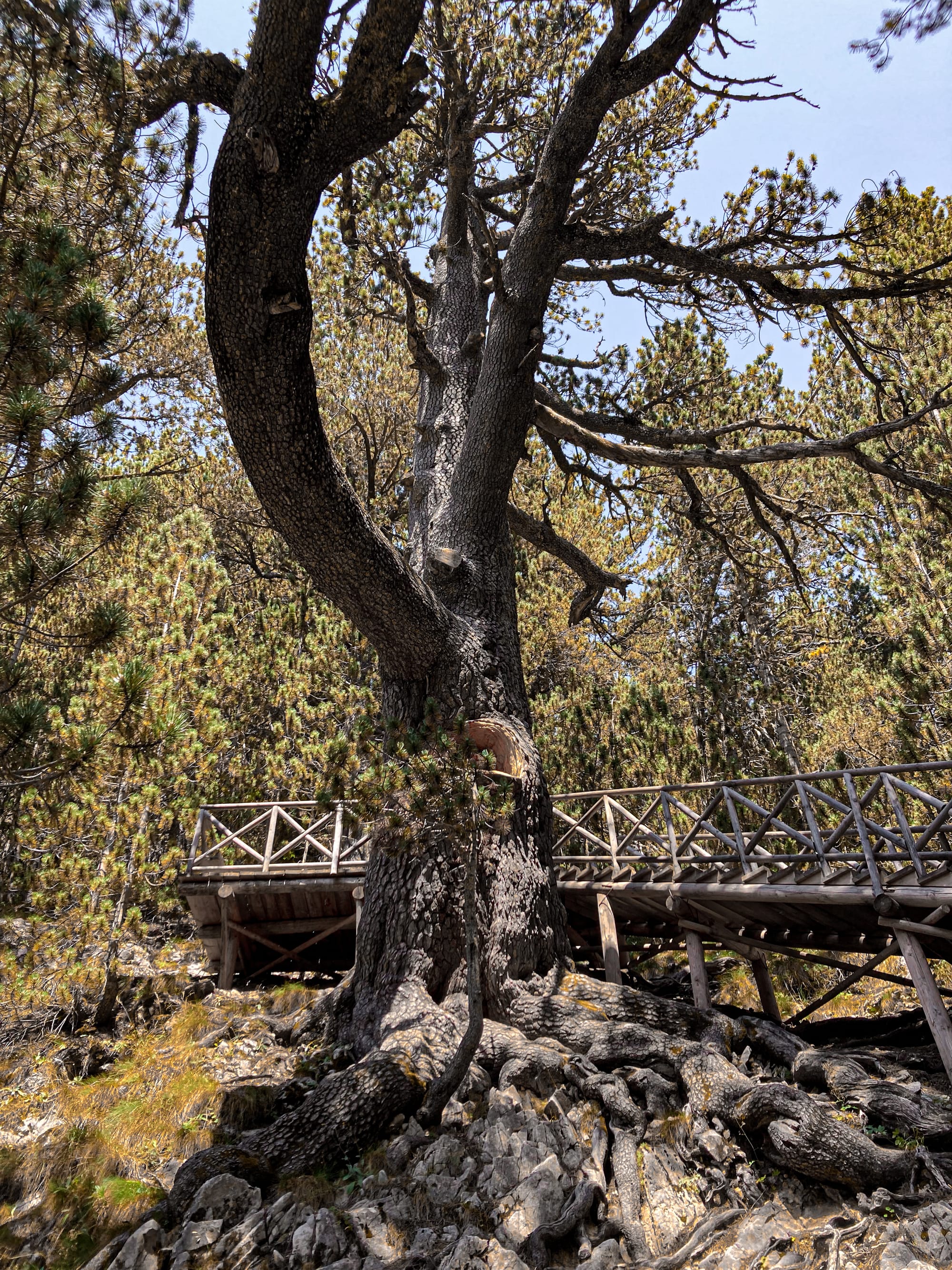
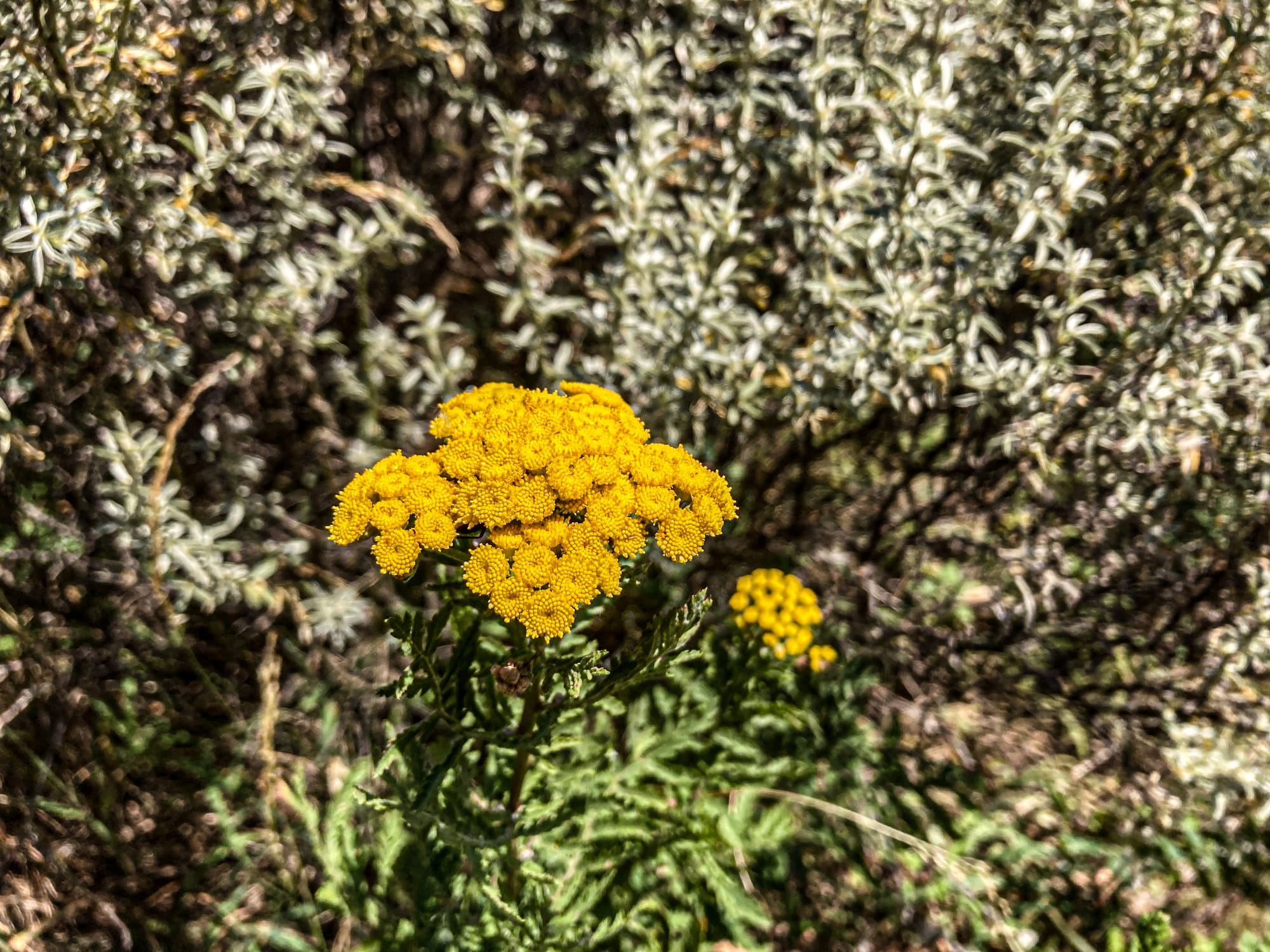
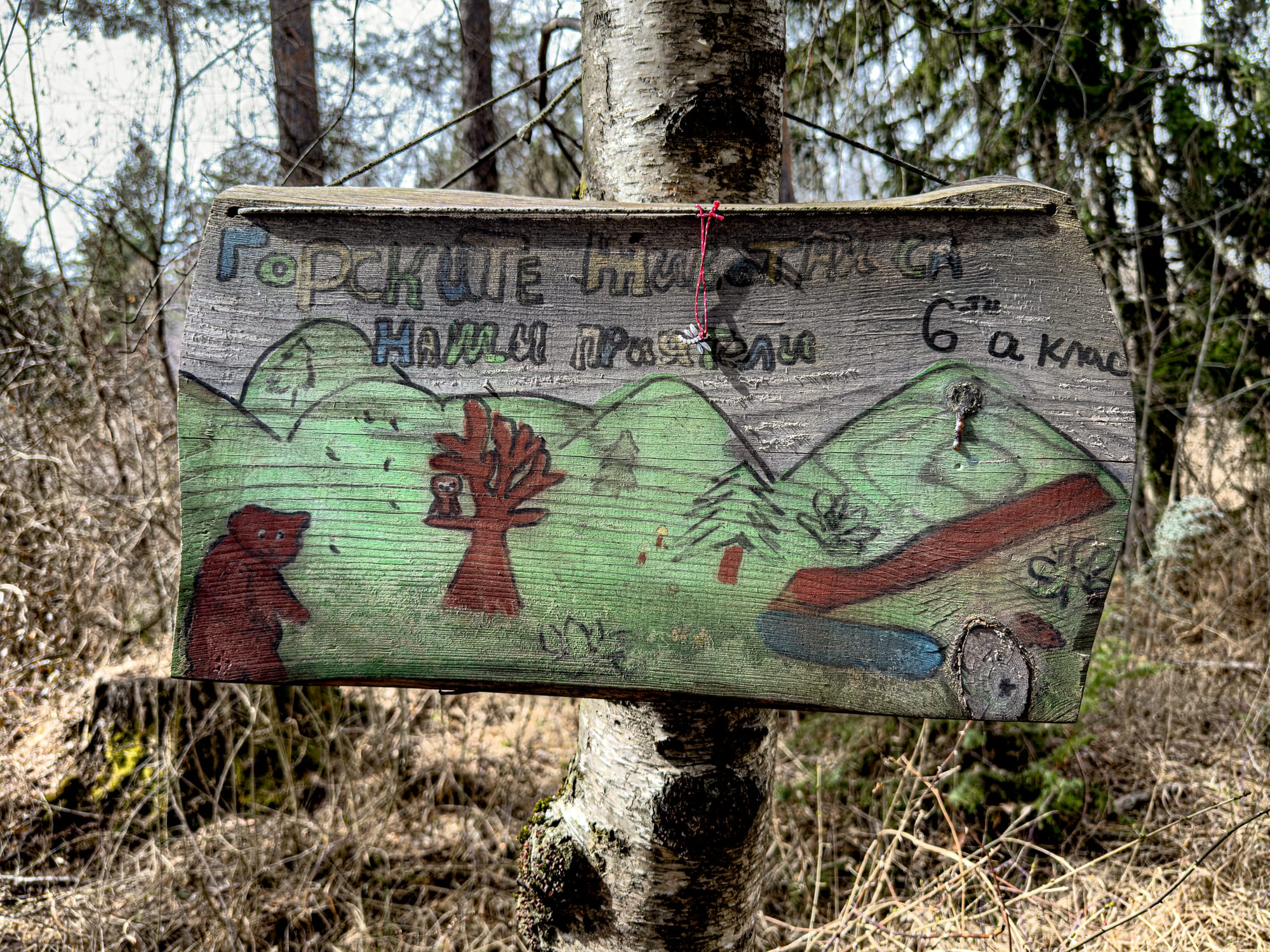
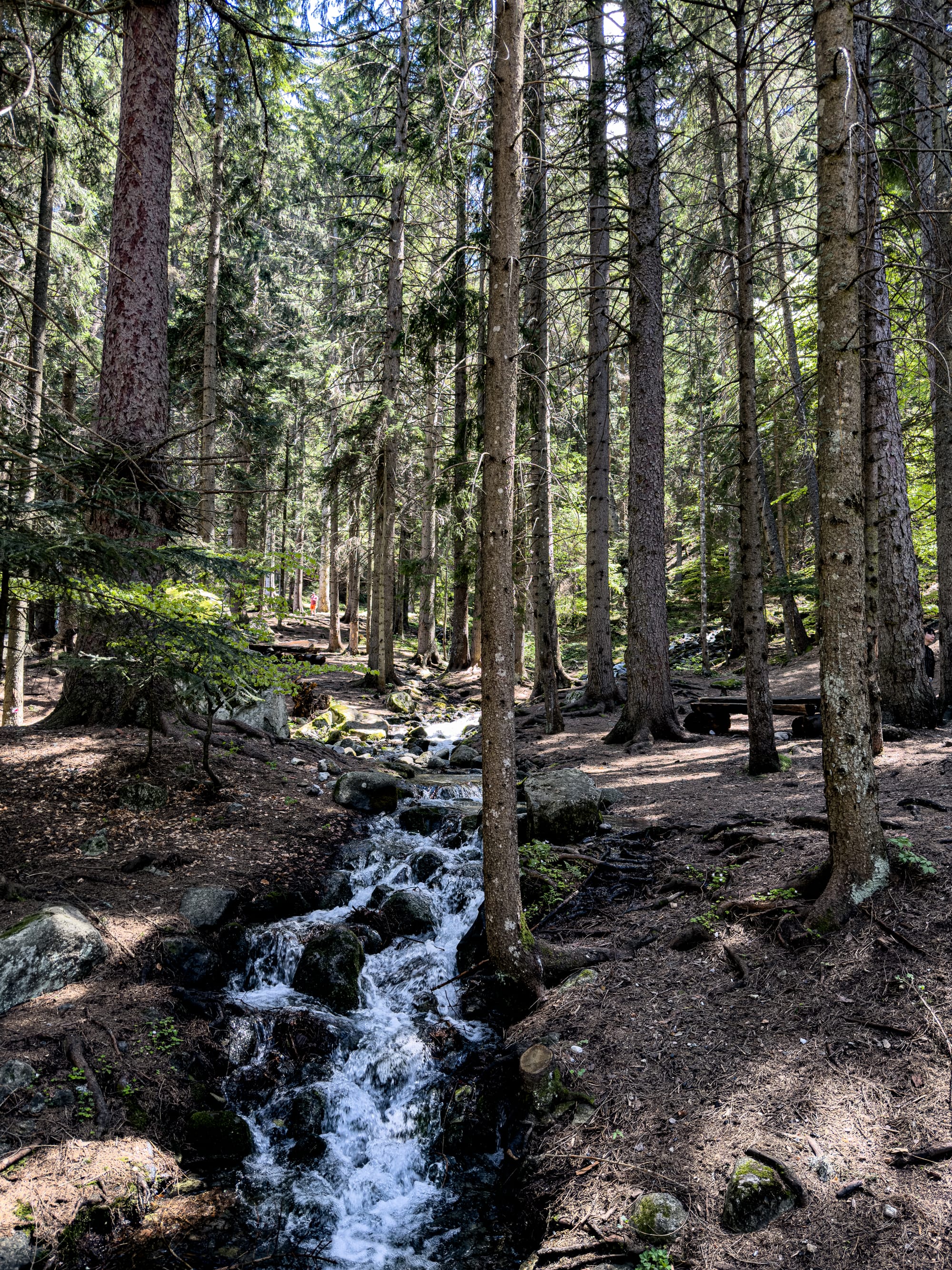
Unlike coastal hubs or big cities, Bansko’s charm lies in being a true mountain town. Traditional stone houses, mehanas serving slow-cooked stews, and seasonal festivals weave local life into the nomad experience. You come here for community, but you stay for the rhythm—affordable living, close connections, and the daily reminder that you’re surrounded by one of Europe’s most beautiful national parks.
A wholesome mountain town
What sets Bansko apart isn’t only its nomad infrastructure—it’s the sense of wholesomeness that’s hard to find elsewhere. Life here feels grounded. You’re surrounded by mountains, fresh air, fruit trees heavy with cherries and plums in summer, and hot springs that steam through winter. It’s a town that makes health feel natural, not aspirational.
Daily rhythms lean simple. Most people cook for themselves, shopping at markets where produce comes from nearby farms. Colivings often feel more like extended households than hotels—shared dinners, garden barbecues, mountain picnics. Coworking Bansko seeded the community years ago, and what’s grown since is less a “scene” than a fabric: hundreds of remote workers from all over the world, gathering each season, yet still living day-to-day in a way that feels approachable and familiar.
The nature is what binds it all together. In winter, ski runs spill right into town. In summer, hiking trails lead to alpine lakes, meadows bursting with wildflowers, and forests so dense you can pick berries as you walk. Unlike coastal hubs where nightlife dominates, Bansko’s appeal is slower, more restorative. You work, you share meals, you get outside—and you end the day feeling like you’ve done something good for yourself.
For nomads, that combination is rare: a large and welcoming international community, but in a setting that encourages balance. It’s not just another stop on the circuit. It’s a place where you might actually feel healthier, calmer, and more whole.
When to go
Bansko works as a year-round base, but the experience shifts dramatically with the seasons.
December–February is peak ski season. The slopes are busy, the town is lively with tourists, and accommodation prices rise. If you’re here mainly for skiing or snowboarding, this is when the conditions are best—but expect crowds.
March is a sweet spot. Snow still covers the slopes, but the peak-season tourists have thinned. It’s easier to find accommodation, the sun feels stronger, and the atmosphere is more relaxed. Many nomads choose March specifically to enjoy winter sports without the frenzy.
April–May are quieter transition months. The snow melts, hiking trails reopen, and fruit trees begin to blossom. The town feels calmer—some businesses slow down between seasons—but if you enjoy peace and don’t mind a little in-between weather, it’s a reflective time to be here.
June–July marks the beginning of the summer nomad season. The Bansko Nomad Fest typically takes place in late June, drawing hundreds of remote workers from around the world. July is buzzing with activity, but it can also get quite hot, especially midday.
August–September are often considered the best months for a longer stay. The weather is warm but more manageable than July, the community is active, and the surrounding mountains are at their most beautiful—meadows full of wildflowers, trails open, and fruit trees heavy with cherries, apples, and plums. September in particular combines mild temperatures with a lively but not overwhelming scene.
October–November is another shoulder season. Days get cooler, hikes become especially atmospheric with autumn colors, and hot springs feel most inviting. The town is quieter before winter tourism begins, making it a peaceful stretch for deep work and local rhythms.
Our advice on the best time to be in Bansko
For skiing and snowboarding, March tends to be the most rewarding month. The slopes are still snow-covered, but the heavy tourist crowds of January and February have faded, leaving behind quieter runs and sunnier days.
For the summer season, June and July bring the energy of Bansko Nomad Fest and a lively community, though you’ll need to be ready for the heat.
For a balance of comfort and activity, August and September are our personal favorites. The air cools just enough to make hiking comfortable, the fruit trees are bursting, and there’s still a strong nomad presence in town.
For quieter months, April through May and October through November offer a slower rhythm. The mountains are just as beautiful—blossoming in spring, glowing with autumn colors later in the year—and the town feels more peaceful, making it an ideal stretch for deep work.
Getting to and from Bansko
The nearest airport to Bansko is Sofia International Airport (SOF), about 160 kilometers away. There’s no local airport in Bansko, so most nomads arrive in Sofia and then book a transfer south. The drive takes around 2.5 hours, winding through mountains and valleys, and while it’s scenic, it does mean Bansko feels less immediately accessible than many other hubs.
Most coliving spaces can arrange transfers for you, often grouping arrivals to share the ride. There are public buses that run from Sofia to Bansko as well, but for many nomads the private shuttle is worth the time saved and the simplicity—especially if you’re arriving late at night or with luggage.
In terms of broader travel, Bansko pairs naturally with Turkey. Many nomads pass through Istanbul on their way between Europe and Asia, and it’s common to see people spending summer in Bansko before moving on to Antalya’s coast. In the other direction, Greece, Spain, and Portugal are popular next stops, with Athens, Chania, Valencia, Lisbon, and Madeira often on the circuit. Bansko fits neatly into this rhythm, often as the European mountain chapter between longer stretches in Asia or the Mediterranean.
For non-EU citizens, it’s worth noting that Bulgaria is now part of the Schengen area. This means your time in Bansko counts toward your overall Schengen stay limit. Once you’ve used up your allocated days, popular next steps are just across the border—Skopje in North Macedonia or Tirana and Sarandë in Albania are straightforward exits that reset your clock.
Working remotely from Bansko
Bansko is one of the rare small towns in Europe where the options for coworking and coliving feel endless. What began with Coworking Bansko has since blossomed into a whole ecosystem of spaces, each with its own community and rhythm. You can choose to work from your coliving, or sign up for hubs like Altspace, Nestwork, or Coworking Bansko itself. Each has a different vibe—some more social, some quieter—but all with reliable internet, dedicated desks, and events that make it easy to plug in.
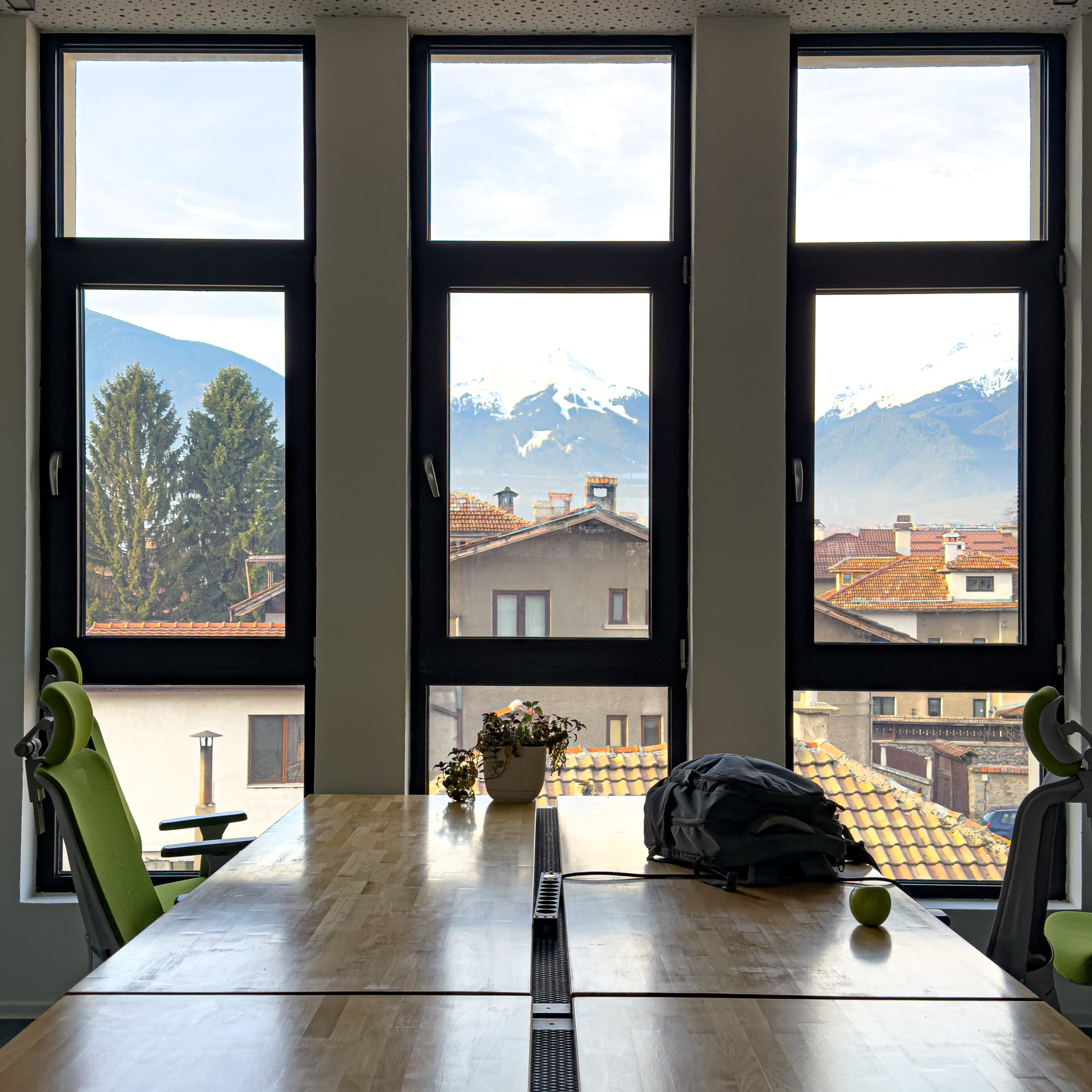
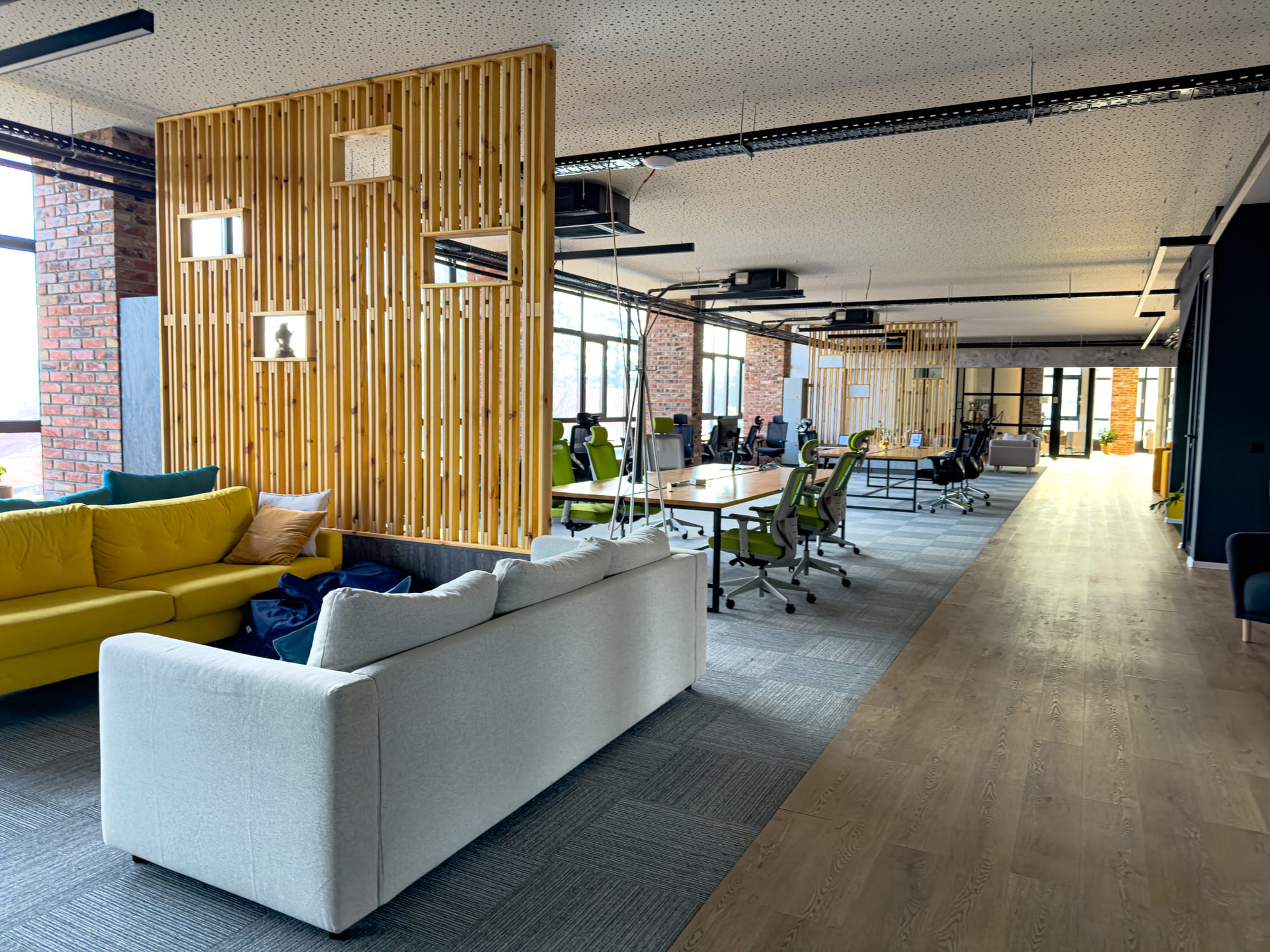
If you prefer a looser setup, plenty of cafés welcome laptops. Around the town center, you’ll find coffee shops with solid wifi, affordable menus, and a laid-back atmosphere. They don’t have the scale of big-city coworking cultures, but that’s part of the appeal—here, working from a café often feels more like being part of local life than hiding in a laptop enclave.
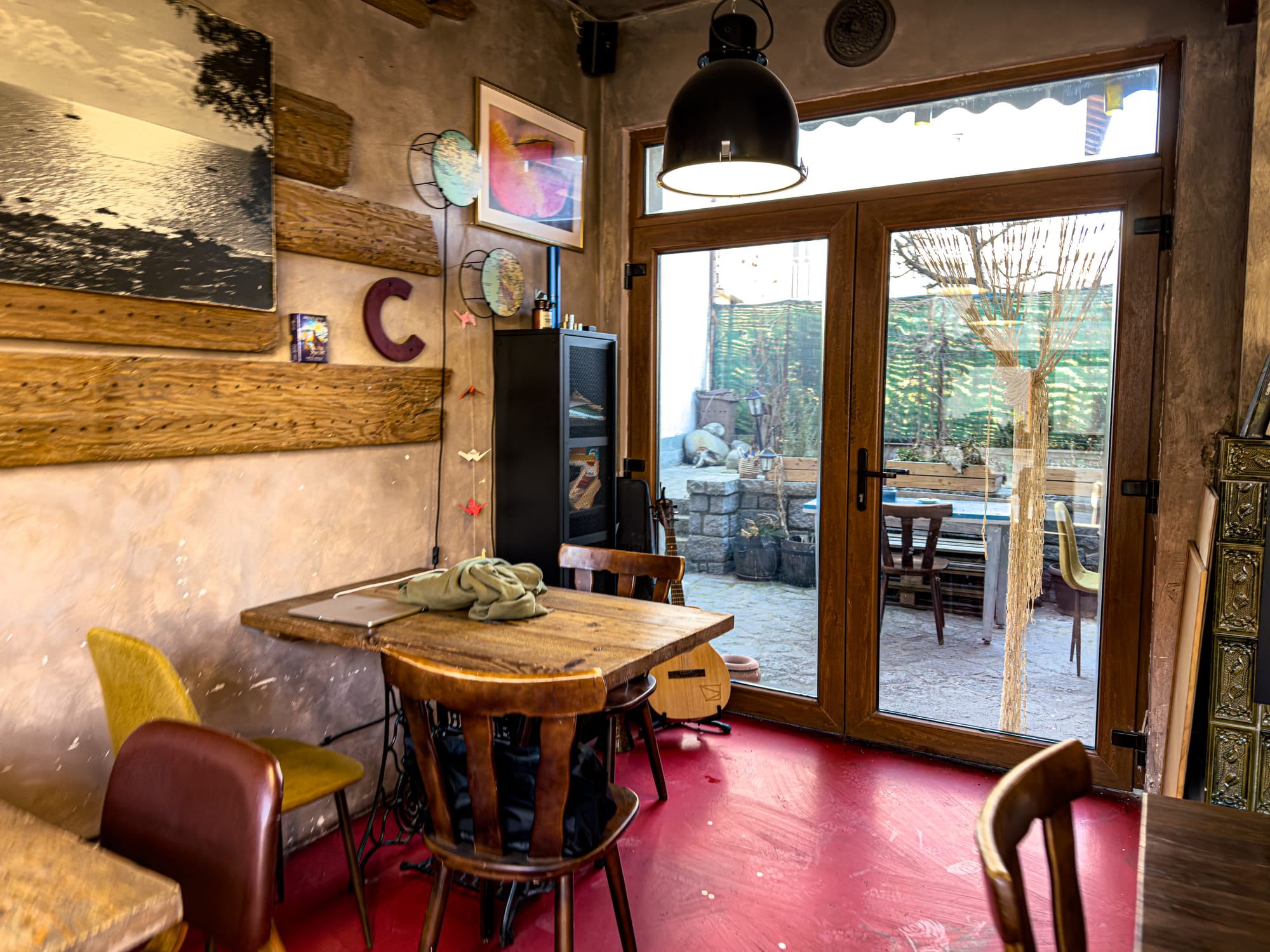
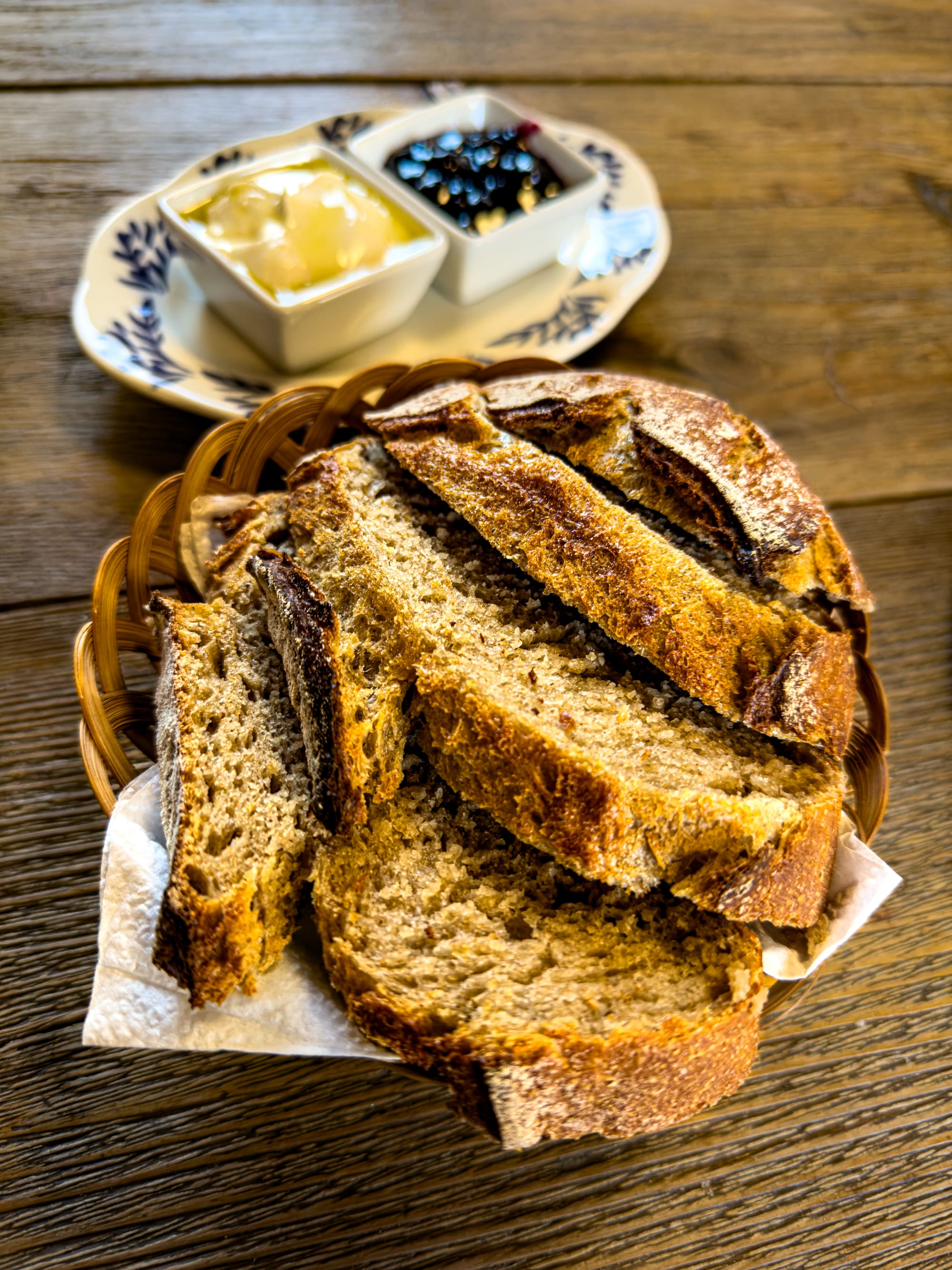
Because so many nomads base themselves here at once, the community energy is strong no matter where you work. You might spend your mornings in a coworking space, afternoons at a café with friends, and evenings at your coliving around a shared dinner table. It’s not just about productivity—it’s about choosing the kind of community you want to work alongside.
Digital nomad community
Bansko has grown into one of the most vibrant digital nomad hubs in the world. What began as a handful of remote workers around Coworking Bansko has steadily expanded into a thriving network of colivings, coworking spaces, and community-led events that give the town an energy far bigger than its size. In summer especially, the calendar overflows—acroyoga in the park, marketing meetups, board game nights, bachata classes, film screenings, photography walks, communal dinners. Most nights, you’ll have more options than you can possibly attend.
The best part is how easy it is to get involved. Staying at a coliving space drops you straight into a ready-made circle of friends, with shared meals and hikes forming part of daily life. But even if you rent your own apartment, the community is so extensive—and so active—that you’ll have no trouble connecting. Between coworking memberships, WhatsApp groups, and the sheer frequency of events, the social fabric is always within reach.
Unlike in larger cities where the scene can feel diffuse, Bansko manages to combine scale with accessibility. The community is big enough that you’ll find your niche, whether that’s skill-sharing workshops or late-night dancing, yet small enough that you’ll keep running into the same faces until they become friends. It’s international, lively, and unusually open—a place where making connections feels effortless.
Bansko’s culture
Bansko’s culture is deeply rooted in its mountain setting and in Bulgaria’s long history of resilience and tradition. At the foot of the Pirin range, the town grew into a center of the Bulgarian National Revival in the 18th and 19th centuries. You still feel that heritage in the old stone houses, the cobblestone lanes, and the Holy Trinity Church with its soaring bell tower—symbols of both faith and independence.
Daily life here moves to a rhythm shaped by the seasons. Winters are lively with skiers and locals gathering in mehanas—traditional taverns—where long tables groan under clay pots of kapama (a slow-cooked mix of meat, rice, and sauerkraut), banitsa pastries, and local red wine, often accompanied by live folk music. Summers are slower but just as communal, with families tending gardens, harvesting fruit, and gathering for outdoor meals. The Pirin mountains are not just scenery—they’re part of daily identity, a backdrop for hiking, herding, berry picking, and song.
Festivals punctuate the year with sound and spectacle. In August, the Bansko International Jazz Festival fills the main square with music from Bulgaria and far beyond, free and open to all. Winter brings the Kukeri parades—men dressed in sheepskins and horned masks, their heavy bells clanging to chase away evil spirits and welcome fertility and health. The Bansko Film Festival each autumn celebrates mountain and adventure culture, while “Pirin Sings” gathers thousands in the region to honor folk traditions of dance, embroidery, and song.
For nomads, being here means stepping into a culture that is both proud of its past and alive in its present. Evenings often lead you into a tavern where locals are celebrating name days or birthdays, singing songs that echo from village to valley. Festivals fill the streets with color, and the rhythms of mountain life—slow meals, seasonal abundance, and a deep sense of hospitality—have a way of shaping your own pace, too.
Psychogeographics
What does it actually feel like to live in Bansko for a month or more? Think mornings where the air is cool and clear, afternoons that carry the scent of woodsmoke or fresh bread from a bakery, and evenings that often gather around a long table in a tavern or coliving kitchen. Life here moves with a rhythm that feels both communal and restorative—work balanced by walks through cobblestone streets, hikes into the hills, or a soak in a nearby hot spring.
The seasons shape the town in ways you can’t ignore. In winter, the days are framed by skiing and snowboarding, with streets lively from the flow of visitors. In summer, the pace softens into long hikes, mountain lakes, fruit ripening in backyard gardens, and the buzz of Nomad Fest filling the square. Autumn colors the valley in gold and crimson, while spring brings blossoms that spill across courtyards and fields. Each season carries its own atmosphere, but all of them feel deeply tied to nature.
Workdays here tend to be simple but full. Coworking and coliving spaces keep the community close, and with everything within walking distance you rarely need more than a short stroll between your desk, the market, and dinner with friends. The town itself is quiet enough to focus, but social enough that you’ll never lack for company. Over time, that balance of mountains, culture, and community shapes your own cadence—slower, healthier, and more grounded.
We wrote a full piece on the texture of life here: Alpine air and hot springs: digital nomad life in Bansko.
Where to stay
Bansko has one of the widest ranges of nomad accommodation options in Europe. You can stay at a coliving for instant community and built-in coworking, or choose an independent apartment if you prefer more privacy while still being close to everything. Here are our top picks, divided between colivings and private stays.
Colivings
Avalon Coliving: Avalon Coliving offers cozy private rooms and a family-like atmosphere. Hikes, events, and even Indian buffets cooked by its owner James make it one of the most welcoming places in town. Having stayed here ourselves, it remains a favorite for both comfort and community.
Nomadico Coliving (June & July): Operating seasonally during June and July, Nomadico Coliving is centered on connection. Rooms are simple but comfortable, and the calendar fills quickly with community events. A strong choice if you want to experience Bansko at the peak of its summer nomad season.
Coliving Valentina: Centrally located, Coliving Valentina pairs comfortable rooms with its own coworking space and communal kitchen. With a relaxed atmosphere, regular events, and easy access to both the gondola and Old Town, it’s a flexible base for different rhythms of work and play.
Coliving Bansko: One of the best-known names in town, Coliving Bansko combines reliable infrastructure with a strong community energy. Expect fast wifi, social events, and a lively atmosphere. A dependable option if you want to be sure there’s connection and activity built into your stay.
Independent stays
Four Leaf Clover: This serviced apartment complex offers spacious studios with kitchenettes, steady wifi, and access to a shared pool and spa area. A bit further from the center, it’s popular with nomads who want independence, lower costs, and a quieter base.
Bansko Royal Towers apartment: Set right next to the gondola, this modern apartment offers pool and gym access along with unbeatable convenience. Great if you want to split time easily between skiing or hiking and evenings out in town.
1-bedroom apartment near gondola: A compact, stylish apartment with a private balcony and full kitchen. Just steps from the gondola, it’s a comfortable choice for solo travelers or couples who want independence without sacrificing location.
2-bedroom apartment near gondola: Ideal for small groups or longer stays, this two-bedroom apartment offers a full kitchen, a cozy living area, and plenty of space. Its proximity to the gondola makes it practical for mixing work with mountain days.
The best things to do in Bansko
There’s no shortage of things to do in Bansko—but what stood out most to us wasn’t just the skiing or coworking, but the way the mountains, traditions, and festivals layer into everyday life. Think winter days on the slopes followed by long evenings in firelit mehanas, summer hikes to alpine lakes, jazz concerts under the stars, and hot springs that steam through the seasons.
This list gathers our personal highlights. Some you’ll hear about right away when you arrive, others you’ll discover only by staying long enough. We recommend choosing a handful that fit your rhythm, whether that’s adventure, music, culture, or simply slowing down into the pace of a mountain town.
Nature and adventure
Hike the Pirin Mountains
Alpine trails through lakes, ridges, and wildflower meadows.
The Pirin Mountains are the crown jewel of Bansko’s landscape—alpine ridges, glacial lakes, and meadows that shift color with the seasons. Trails here range from gentle forest walks to full-day ascents, with options for every level of hiker. Along the way you’ll pass wildflowers, pine forests, and clear mountain streams, always with jagged peaks on the horizon. Even short hikes give you the sense of stepping into something vast and untamed.
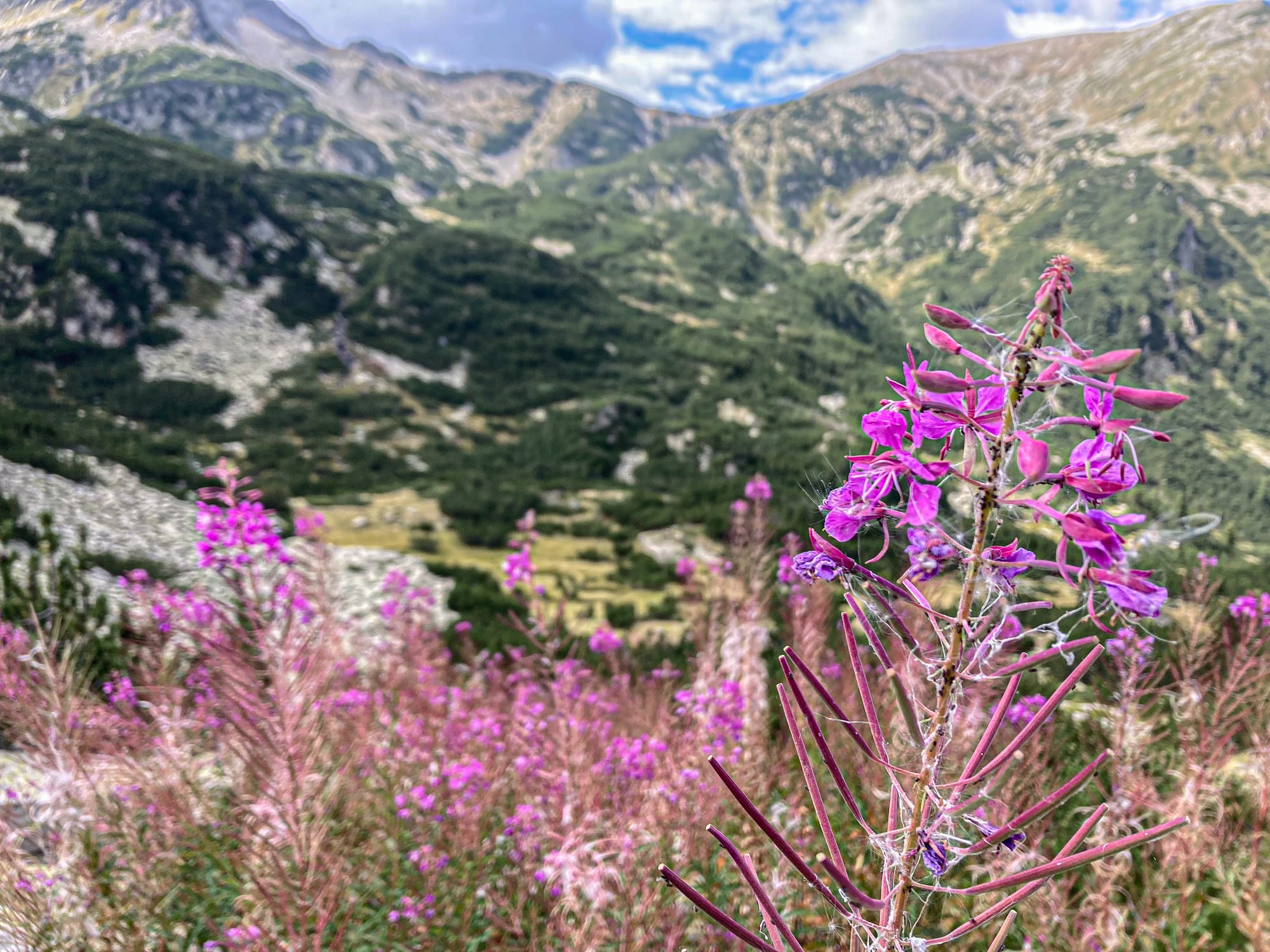
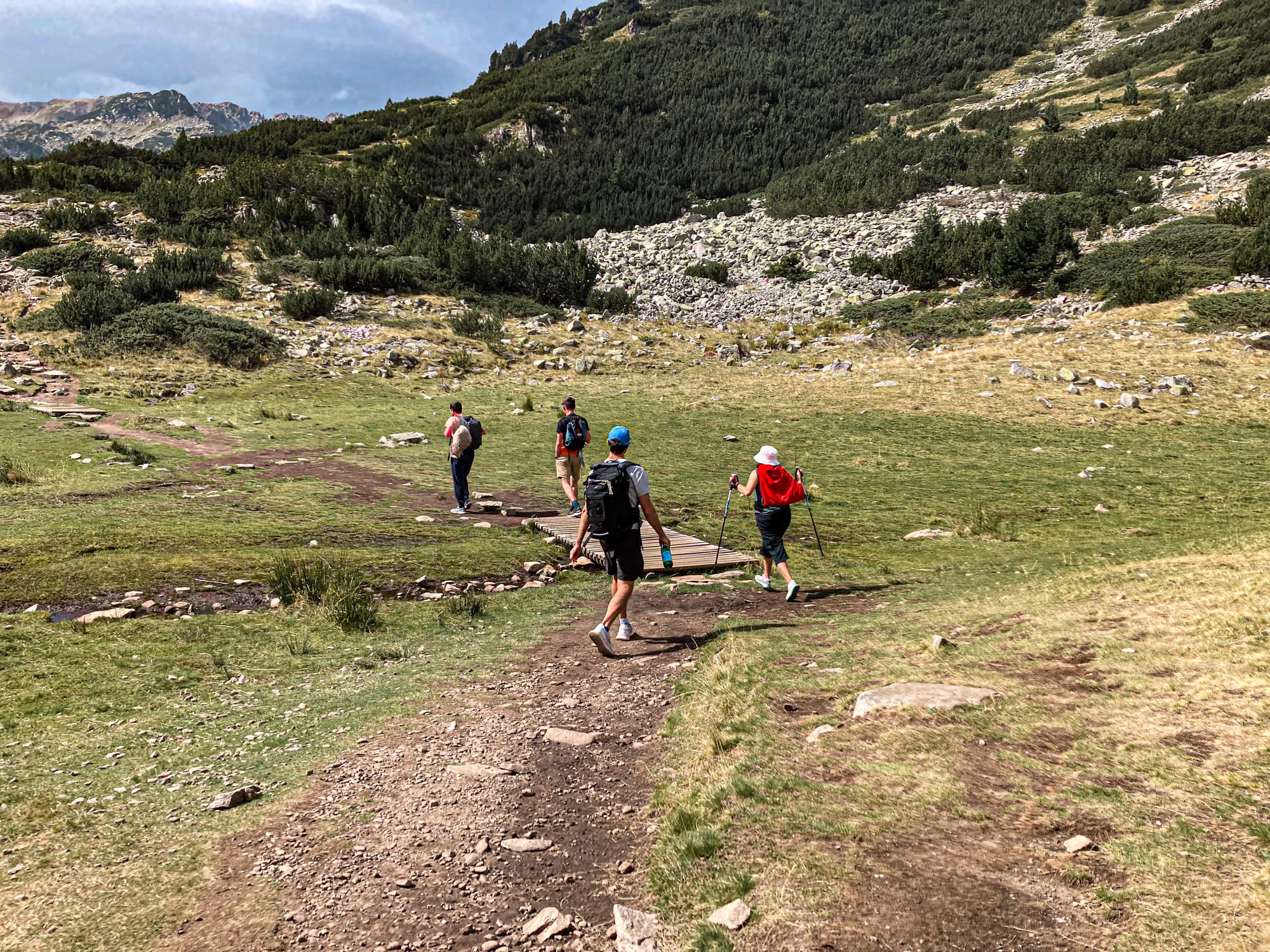
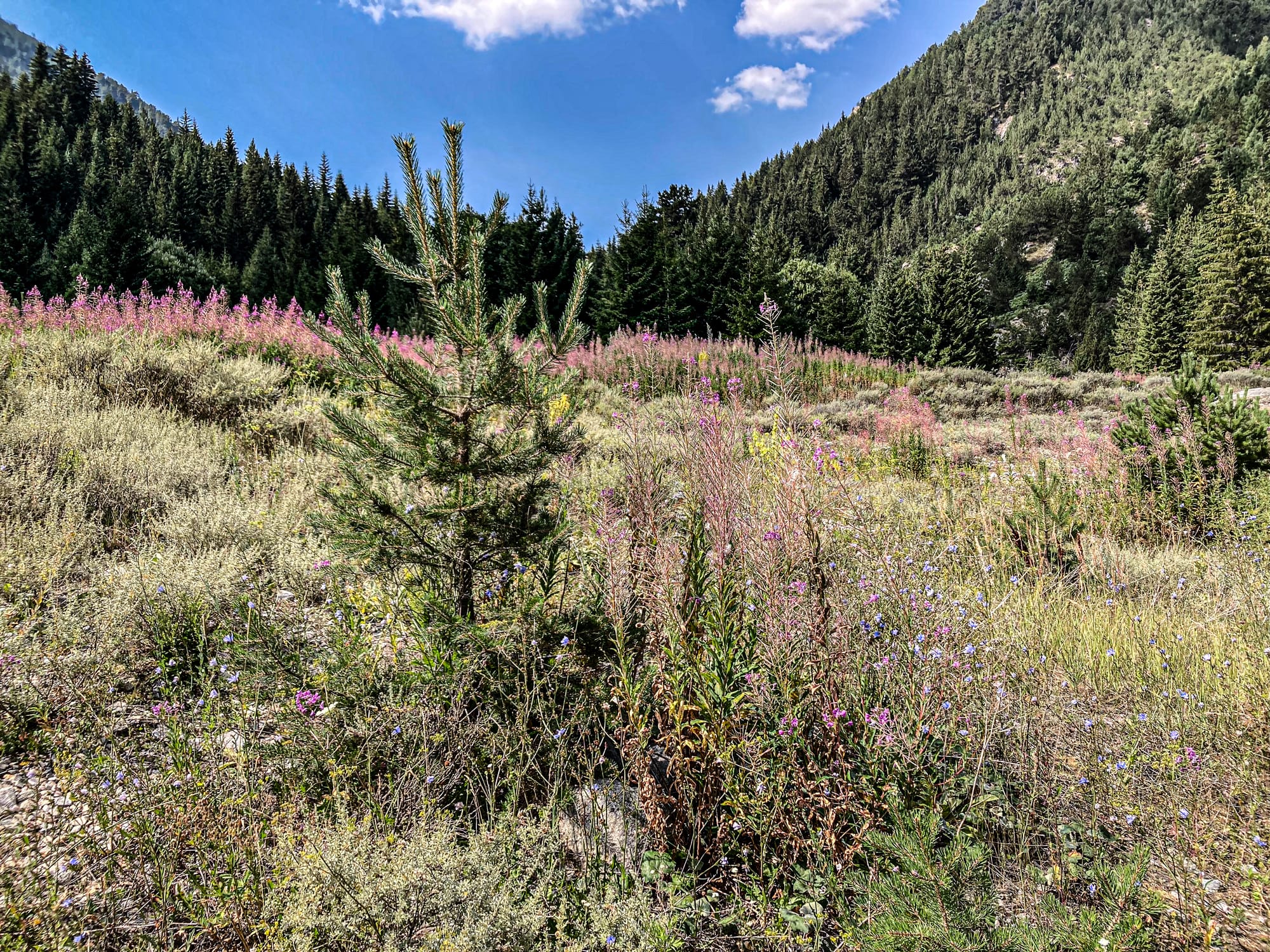
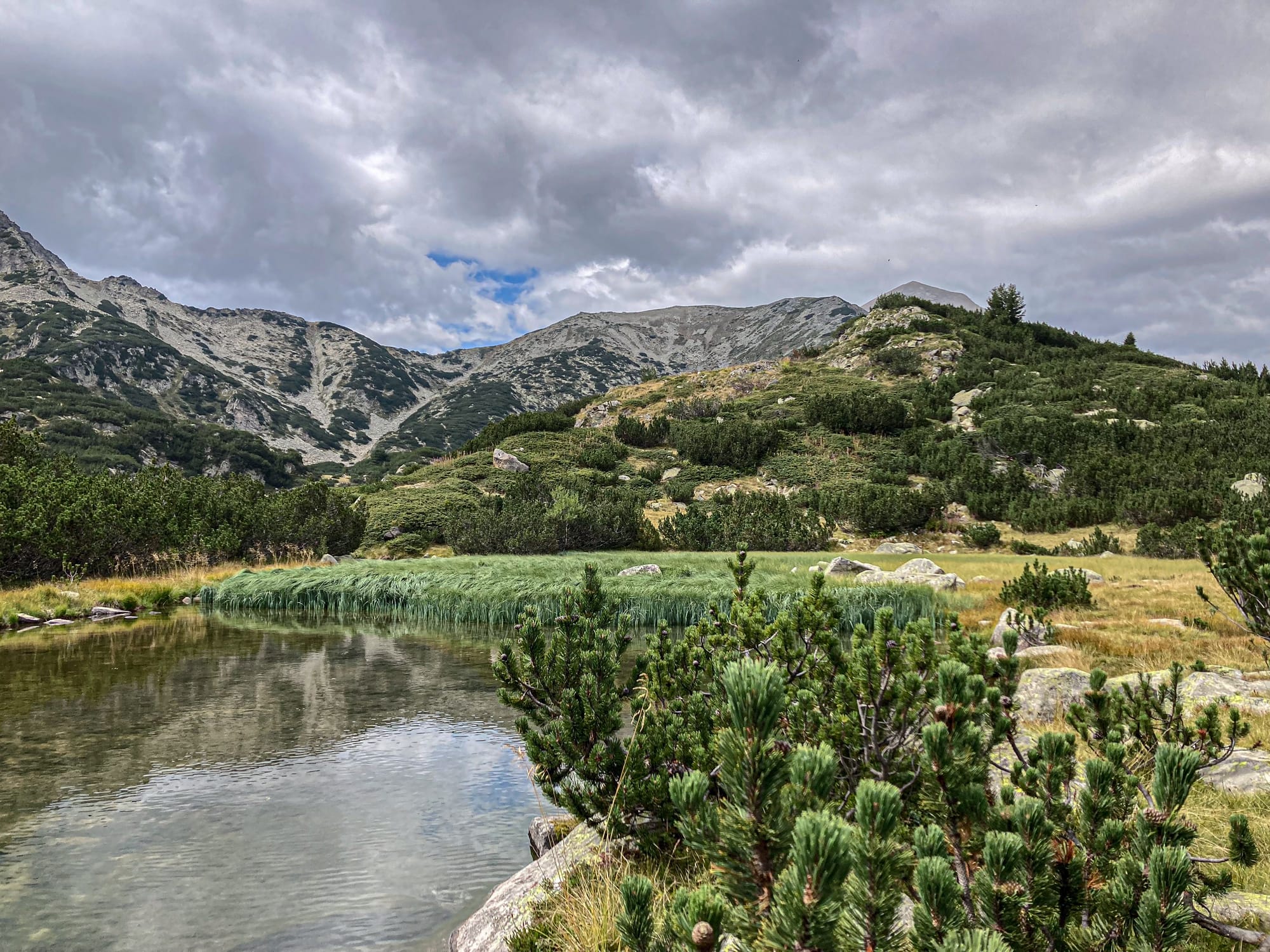
For longer adventures, routes lead to high passes and lakes like Popovo or Muratovo, where still waters mirror the sky. Summer is the best time for hiking, with trails snow-free and fruit ripening in village gardens below. Whether you come for a morning walk or a multi-day trek, the Pirin Mountains offer a sense of scale and clarity that few nomad hubs can match—nature at its most grounding, right on Bansko’s doorstep.
Go skiing or snowboarding
Bulgaria’s best slopes with a lively après-ski scene.
Bansko has become Bulgaria’s premier winter sports destination, with modern lifts, long runs, and terrain that suits everyone from beginners to seasoned skiers. The gondola runs directly from town up into the mountains, making it easy to spend your mornings working and your afternoons on the slopes. In peak season, the pistes are buzzing with energy, rental shops line the base, and cozy mountain huts serve hearty Bulgarian food between runs.
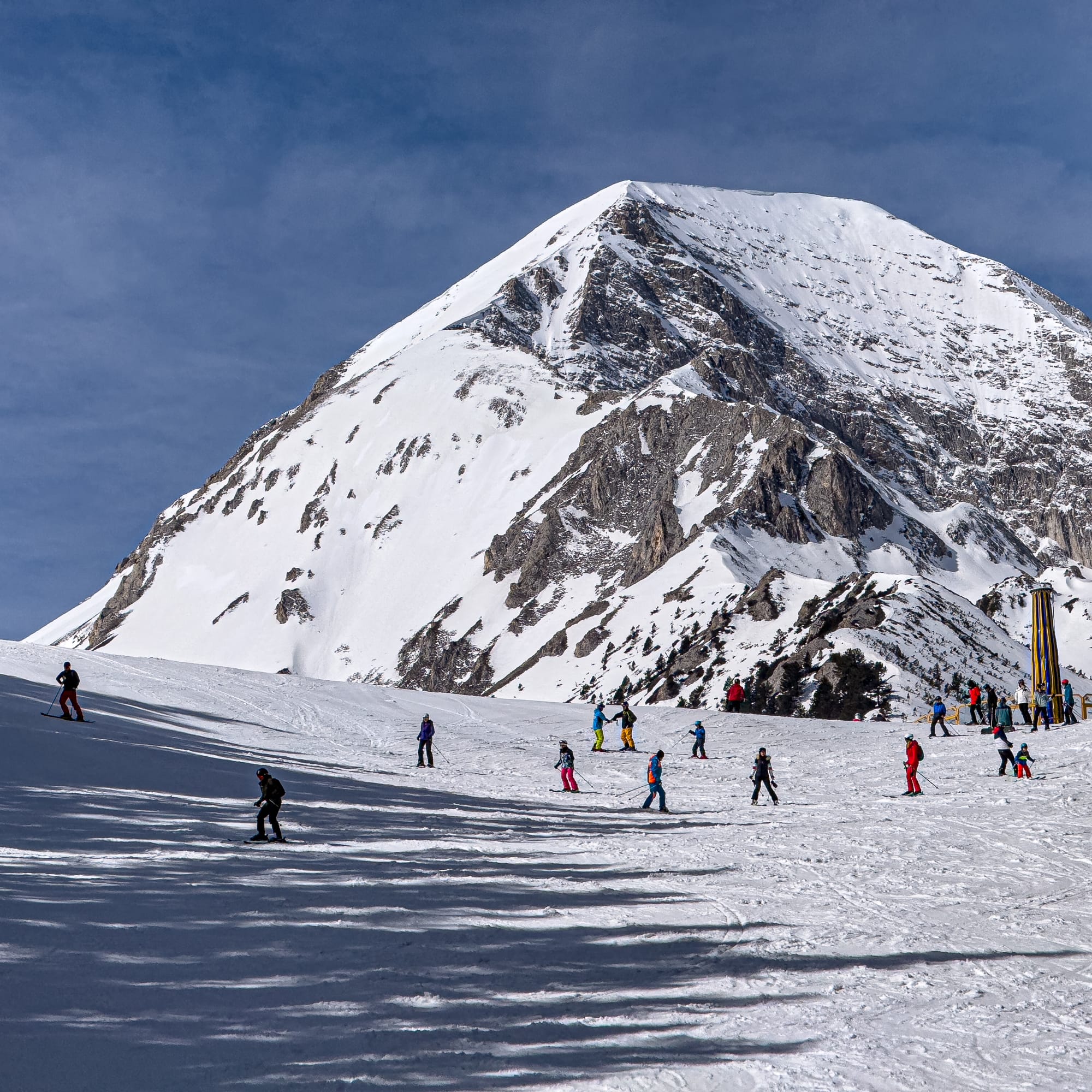
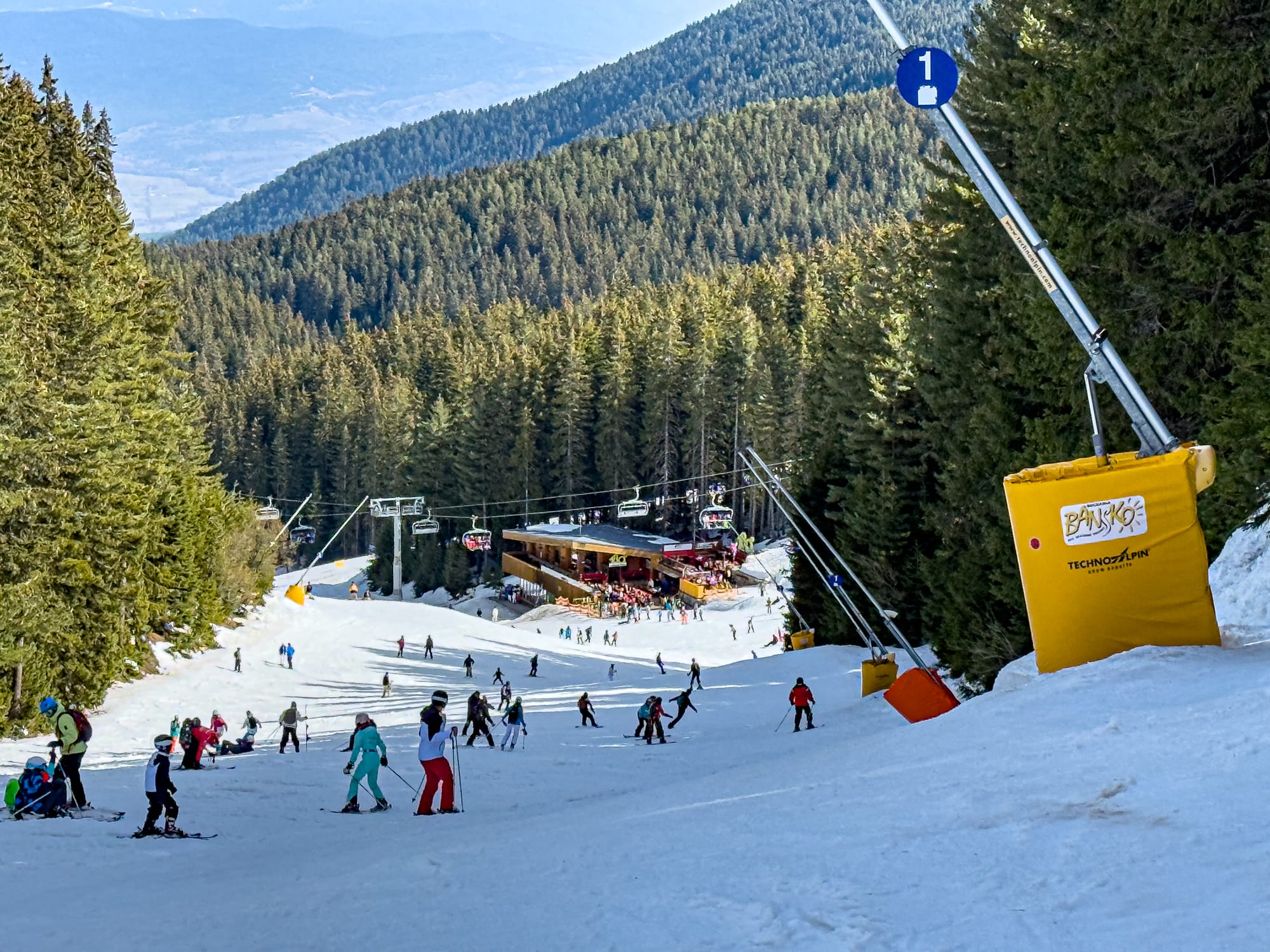
Beyond the skiing itself, the atmosphere is part of the draw. Après-ski bars spill over with music and mulled wine, while back in town mehanas offer firelit dinners after a cold day in the snow. January and February are busiest, with the most reliable snow, but March is a sweet spot—lighter crowds, sunnier days, and still plenty of powder. For nomads who love winter sports, Bansko makes it effortless to combine work and skiing in the same day.
Go on an ATV adventure
Off-road rides through forests, rivers, and alpine meadows.
ATV tours around Bansko are a fast-paced way to explore the landscapes beyond the hiking trails. Guided routes wind through pine forests, splash across shallow rivers, and open out onto meadows with sweeping views of the Pirin peaks. It’s less about getting somewhere specific and more about the thrill of the ride—the hum of the engine, the rush of wind, and the sudden quiet when you pause to take in the scenery.
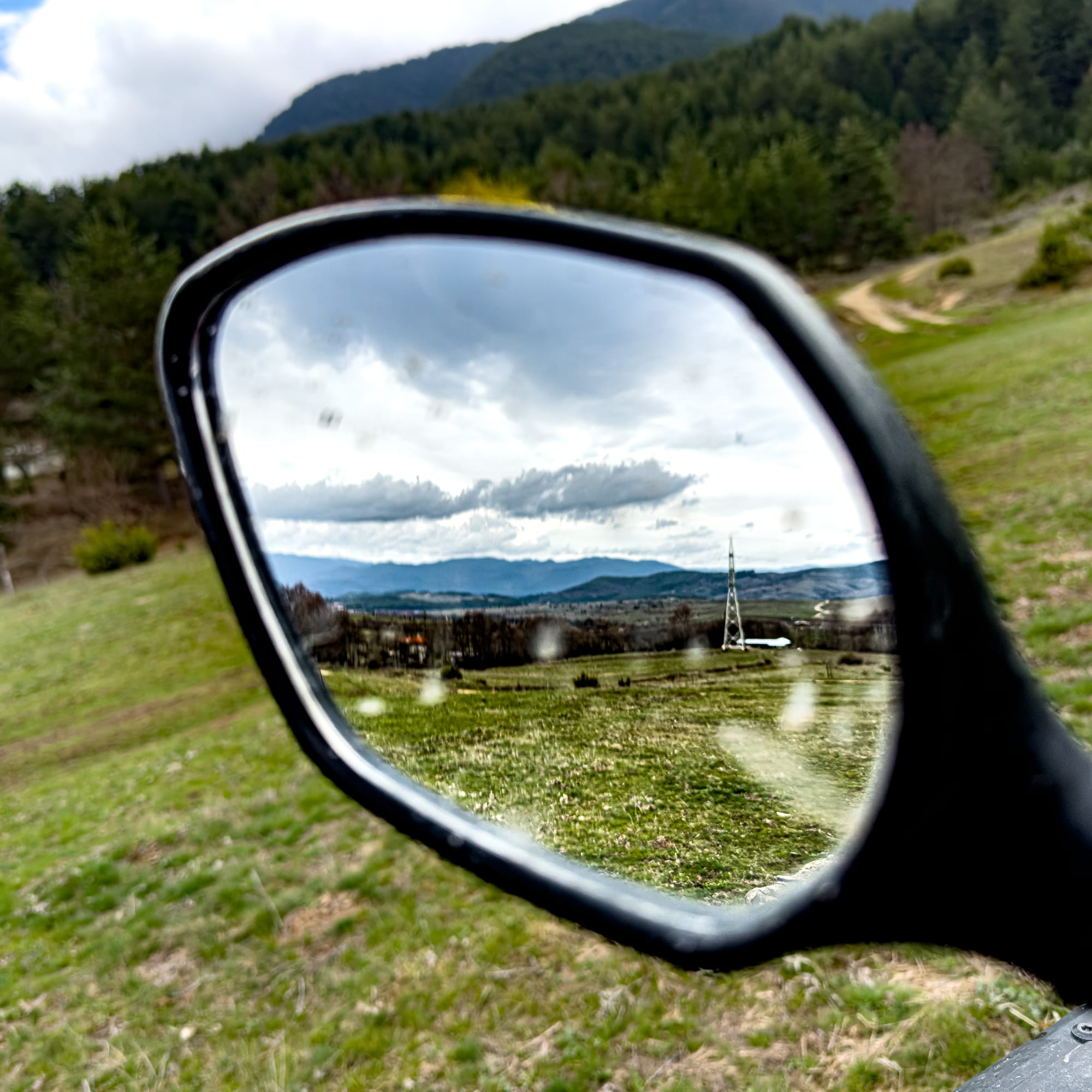
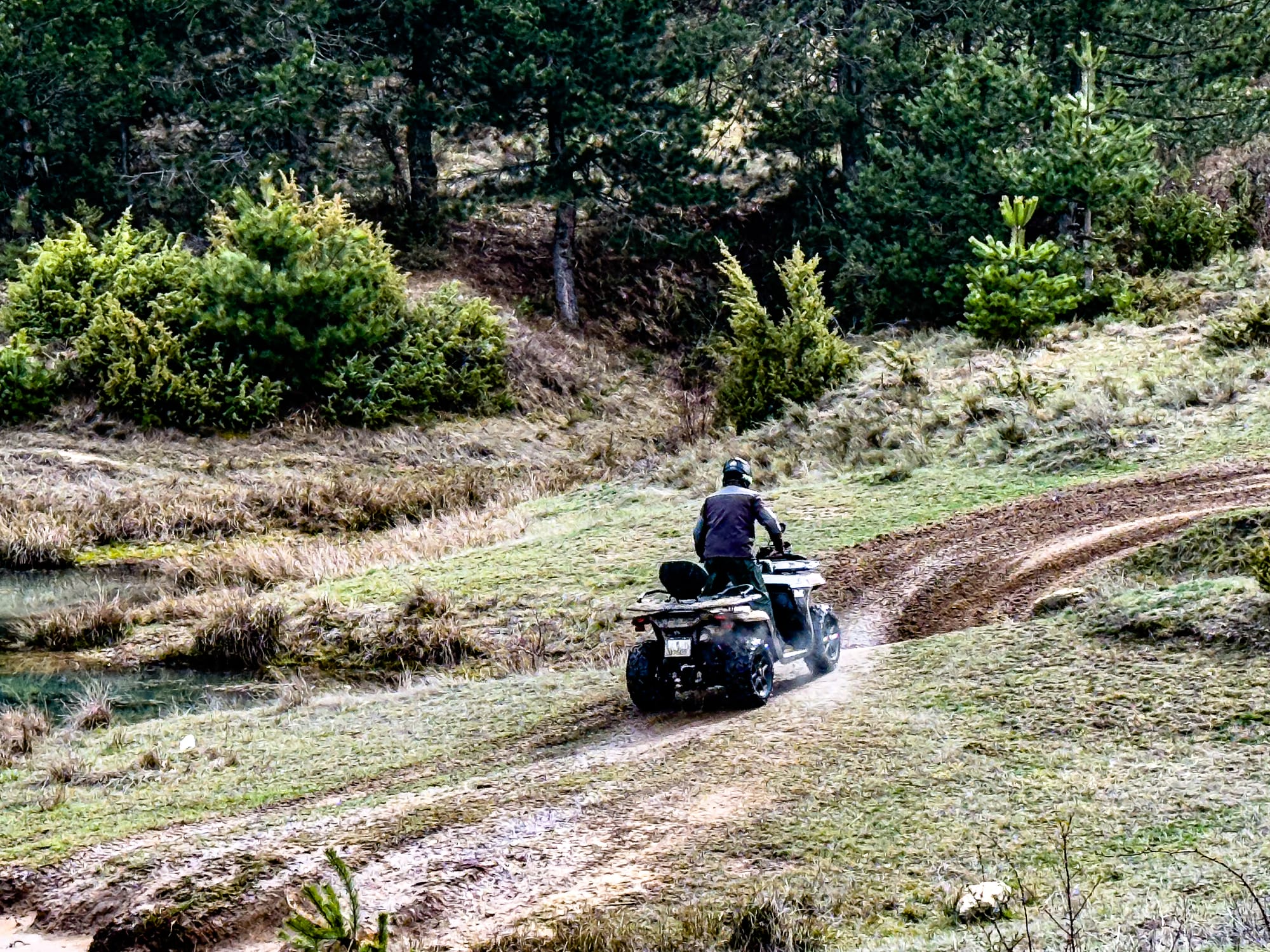
Tours run year-round, with snow adding a playful challenge in winter and wildflowers brightening the paths in summer. For nomads who spend much of their day at a laptop, an ATV ride is a refreshing change of pace—adventurous, messy, and full of energy. It’s one of the more lighthearted ways to experience Bansko’s wild side.
Visit St. Nicholas Waterfall
A quiet cascade tucked into the forest near Bansko.
Just outside of town, the trail to St. Nicholas Waterfall winds through pine forest before opening onto a small cascade spilling over mossy rocks into a shaded pool. It’s not the biggest or most dramatic waterfall in Bulgaria, but its charm lies in the setting—peaceful, green, and close enough for an easy half-day escape. The sound of rushing water and the cool air under the trees make it a refreshing break from town life.
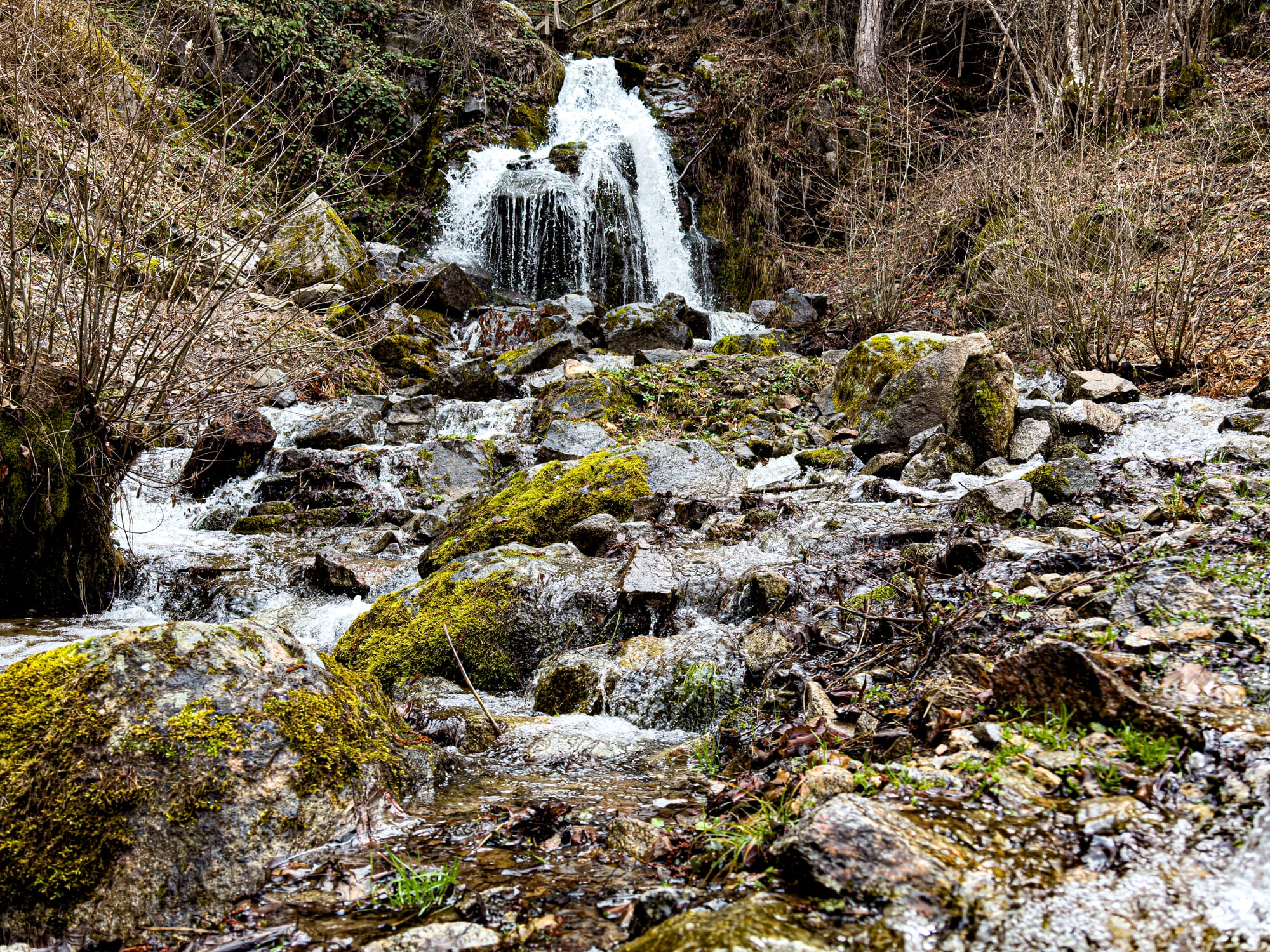
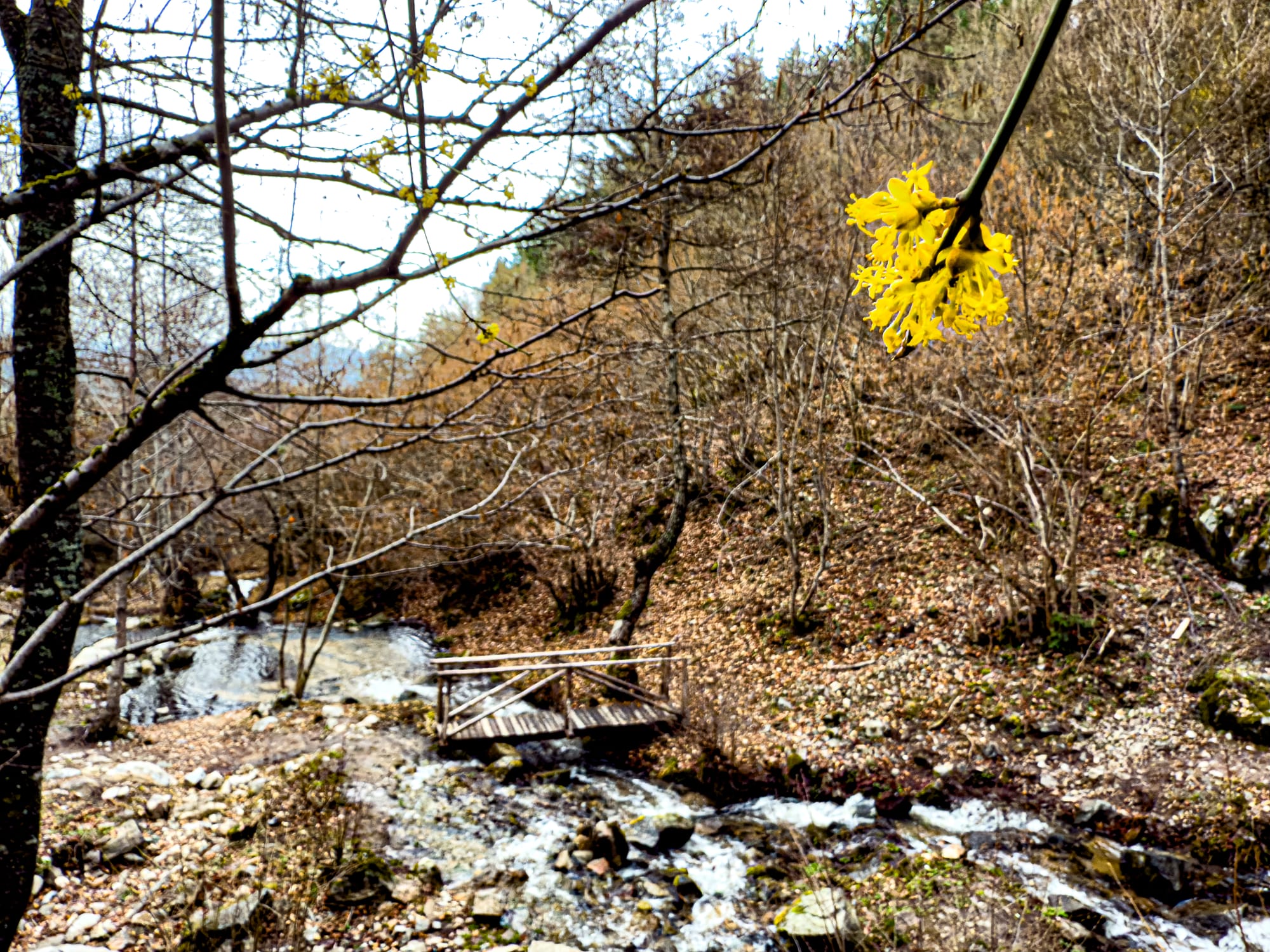
You can hike to the falls directly, or join one of the ATV tours that detour here, adding a bit of adventure to the route. Either way, it’s a calm, grounding spot—ideal for a picnic, a photo stop, or simply pausing to breathe in the forest air.
Community and wellness
Relax at Pulse Therme
Mineral pools, saunas, and spa treatments with mountain views.
Pulse Therme is Bansko’s most polished wellness retreat, combining hot mineral pools with a full spa setup. The complex includes indoor and outdoor pools, multiple saunas, steam rooms, and areas designed for lounging between dips. Surrounded by mountain scenery, it’s a place where you can let the pace of town and the slopes fall away for a few hours of deep rest.
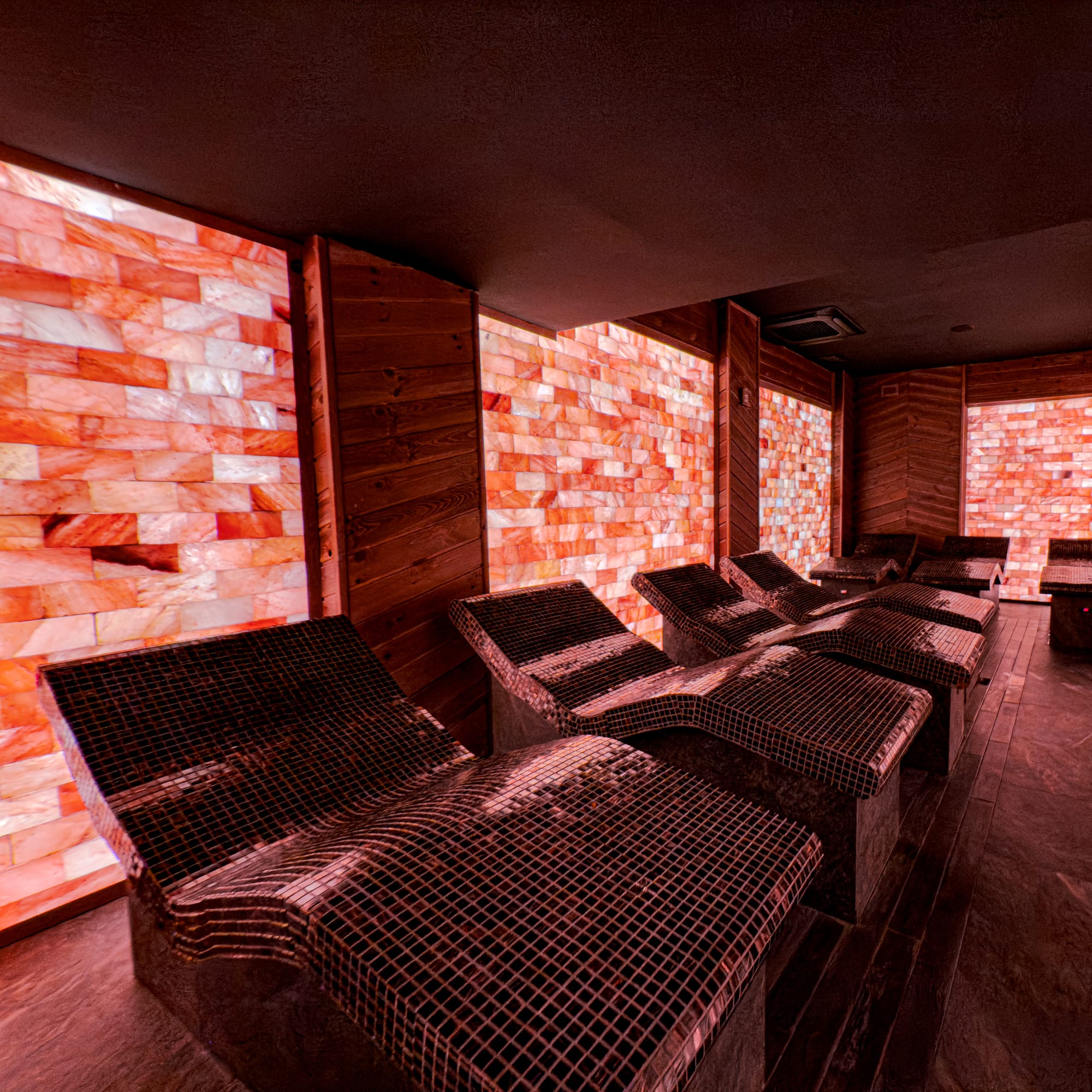
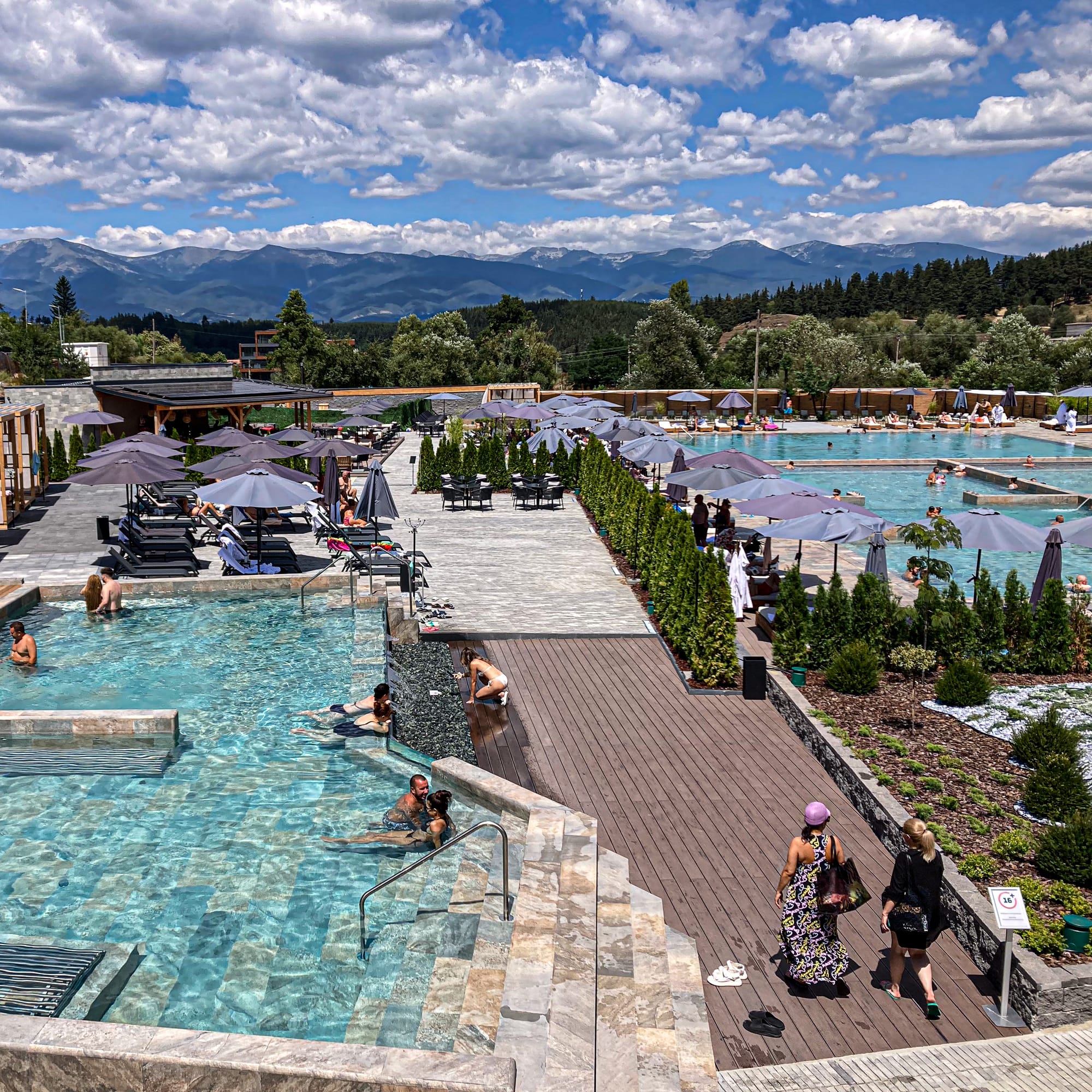
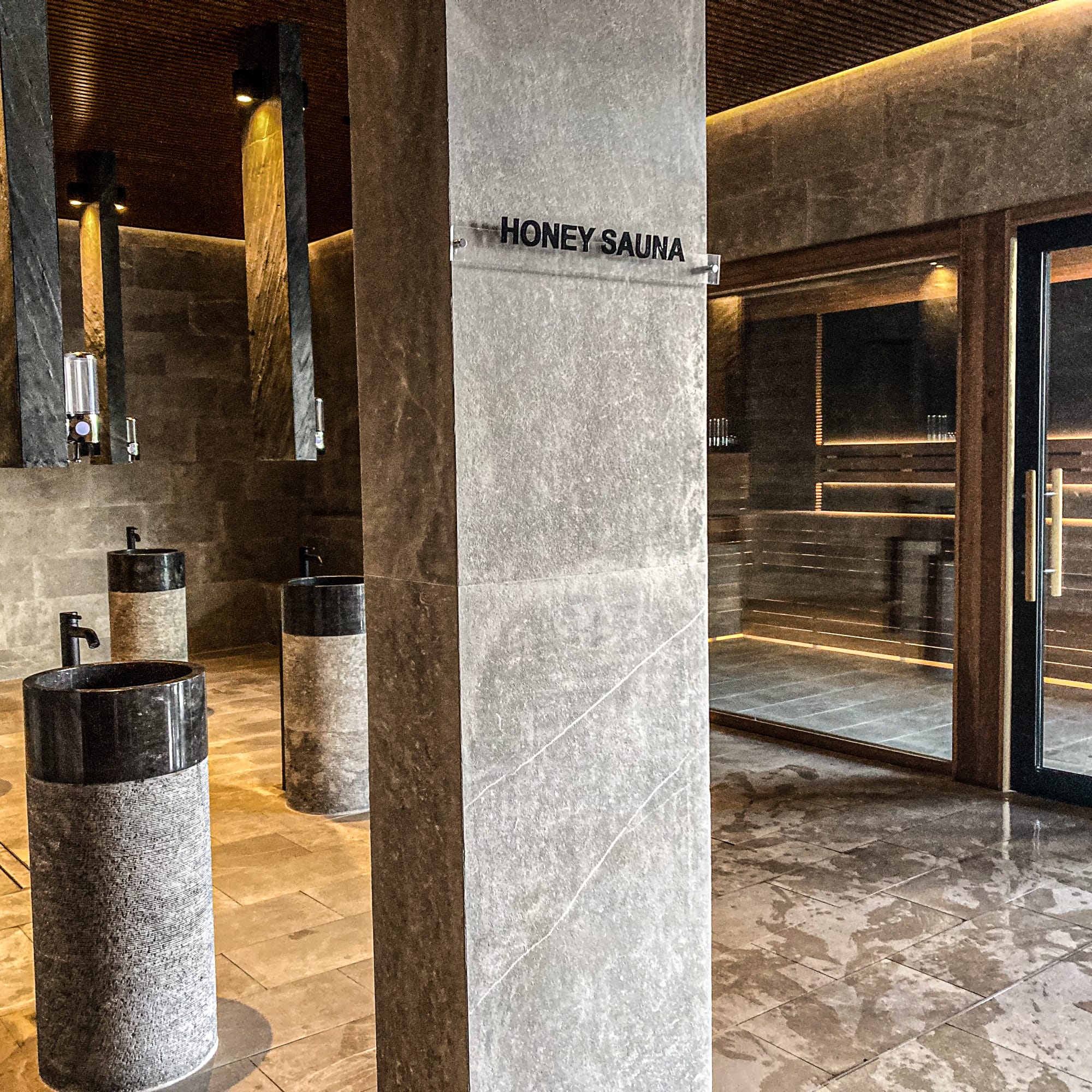
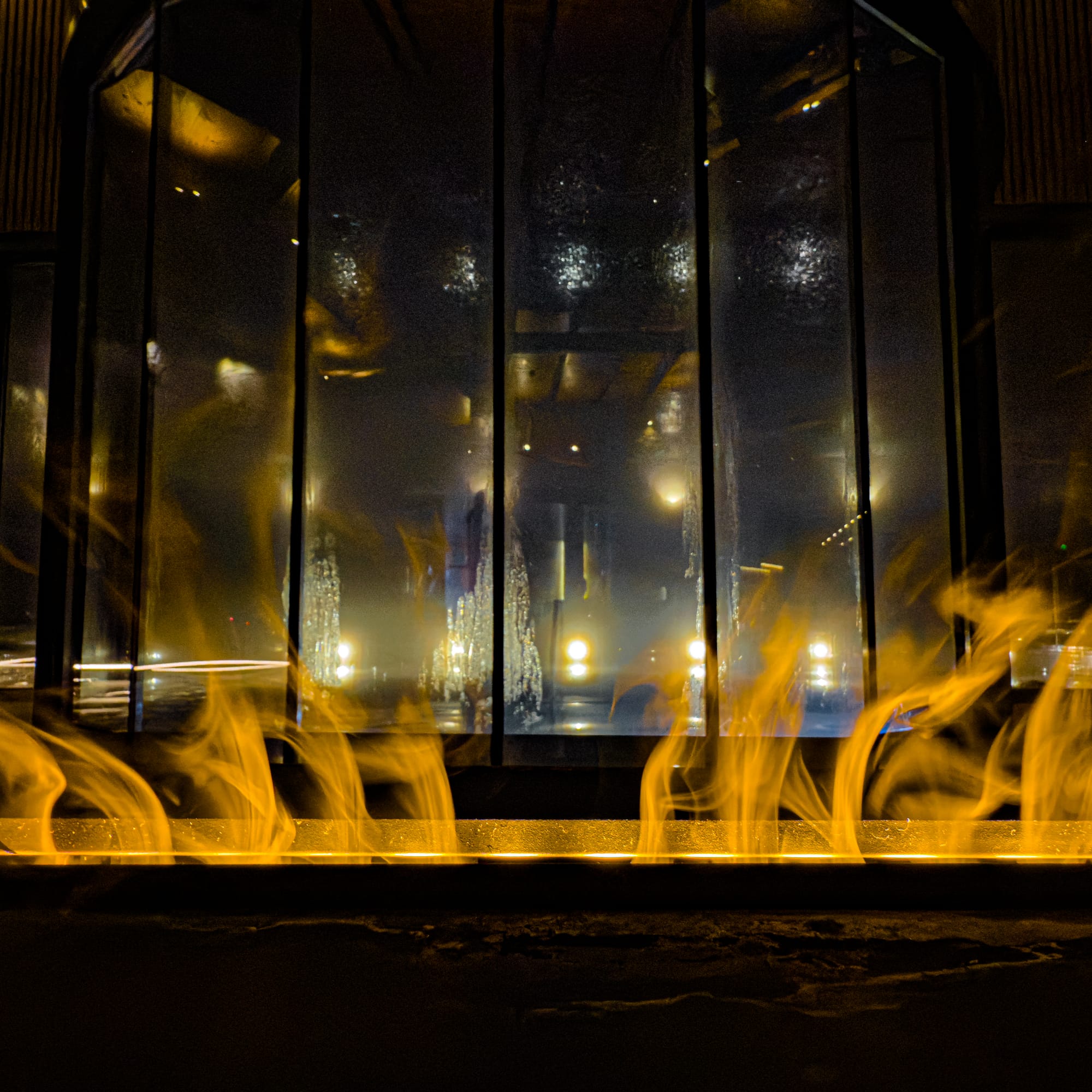
It’s especially popular after long days of skiing or hiking, when sore muscles meet warm mineral water. Some visitors go just for the pools and thermal circuit, while others opt for massages or spa treatments that extend the experience. Whether you come for recovery or simple relaxation, Pulse Therme offers one of the most restorative ways to spend time in Bansko.
Soak in thermal waters at Izgreva
Rustic hot pools just outside town.
A short drive from Bansko, Izgreva’s thermal baths offer a more low-key alternative to polished spas. Pools of varying temperatures sit under open skies, fed by mineral-rich waters that have long been part of Bulgaria’s wellness traditions. The setup is simple—stone basins, steam rising in the cool air, locals chatting between dips—but that’s part of the charm.
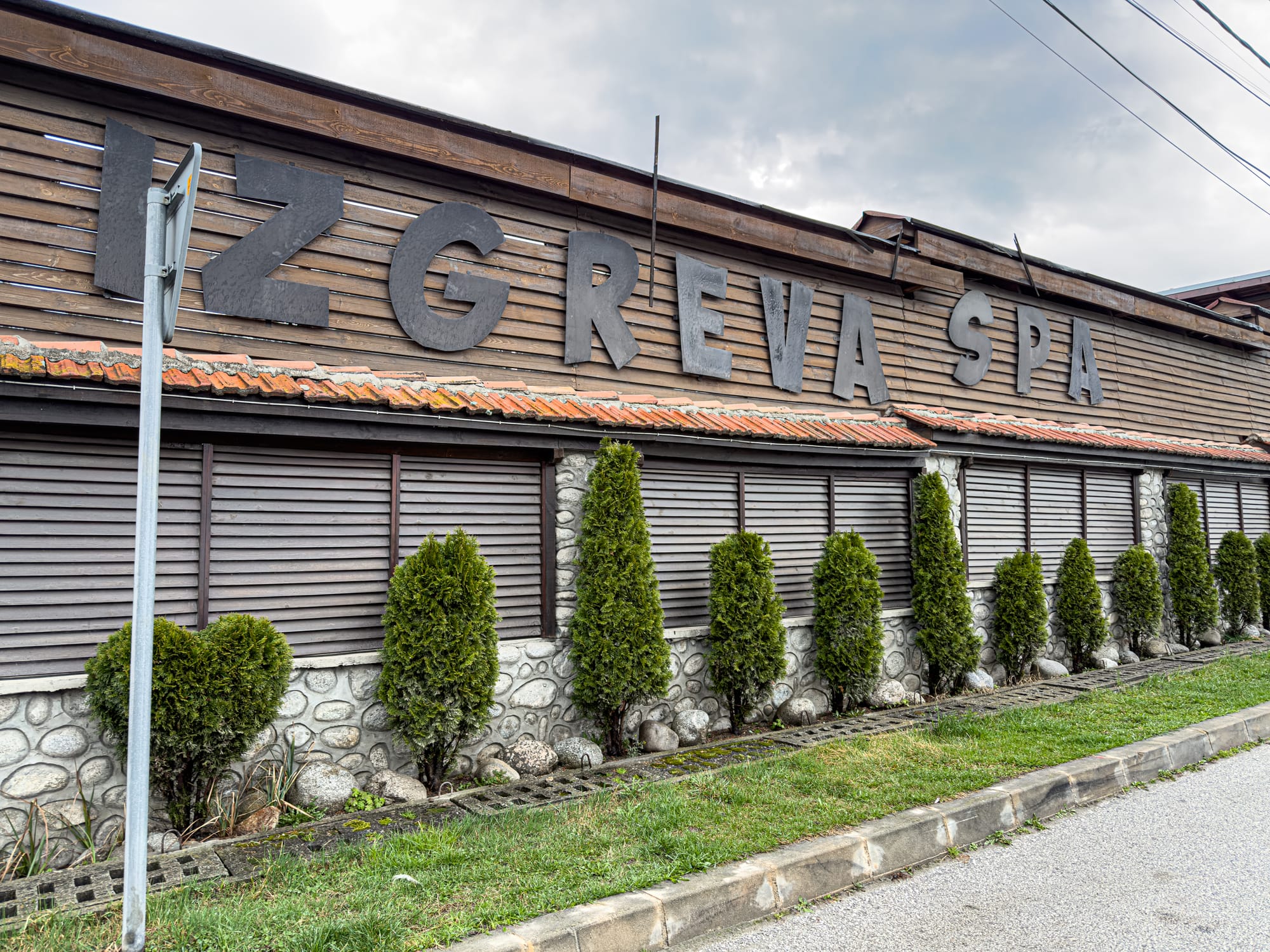
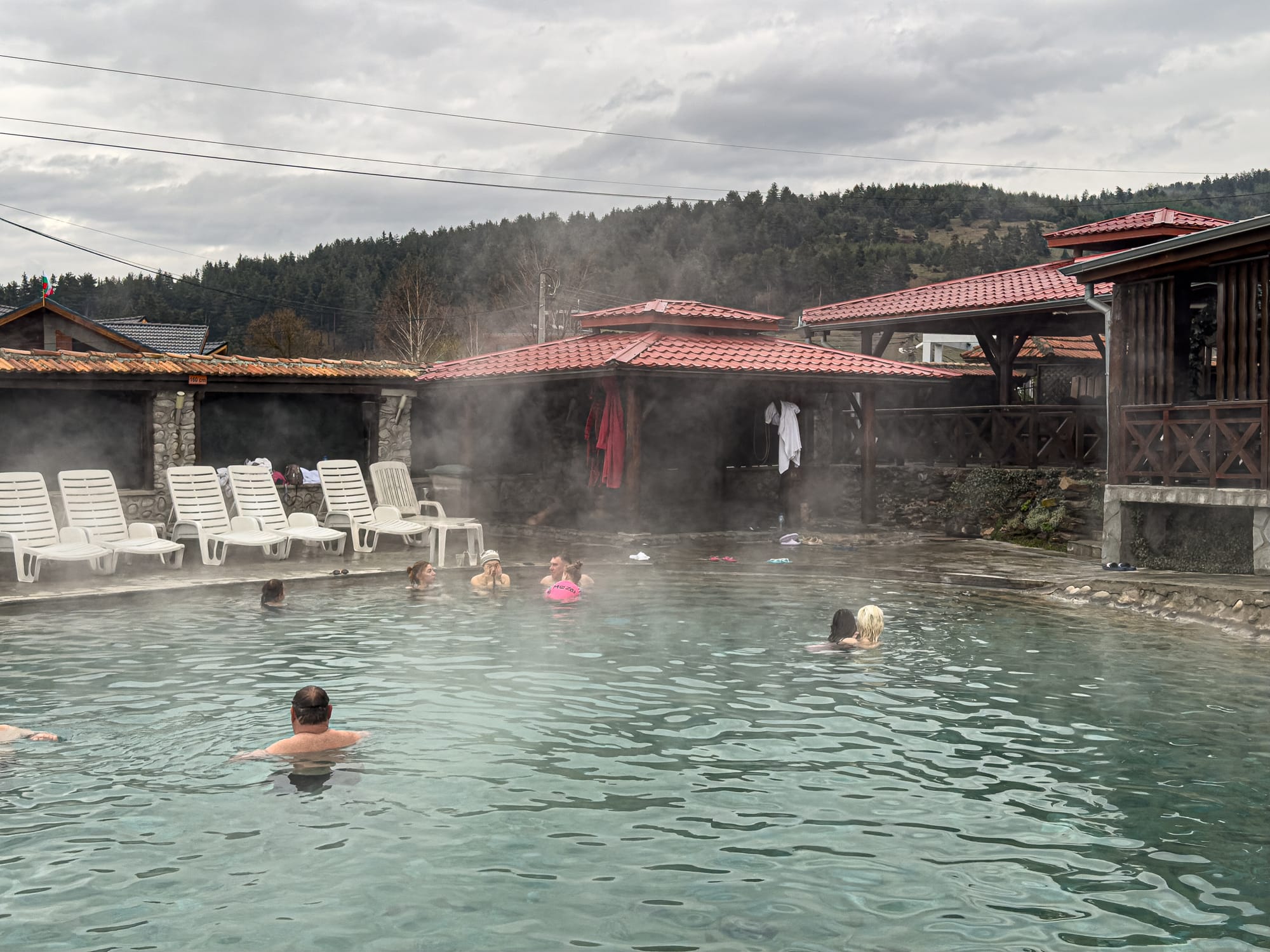
It’s especially atmospheric in winter, when you slip into steaming water while snow piles up around the edges, or in summer evenings when the air is warm and still. Izgreva is a place where time slows: a spot to soak, rest, and share in a tradition that feels rooted in the land itself.
Attend a curry night at Avalon Coliving
Homemade Indian food and one of Bansko’s best community gatherings.
Avalon Coliving is famous in Bansko for its curry nights—weekly dinners where James, the owner, cooks up a spread of rich Indian curries, fresh naan, and all the trimmings. Vegan options are always part of the menu, and the food is consistently excellent, hearty, and made with care. What begins as a meal quickly turns into a long evening of laughter, storytelling, and connection around shared tables.
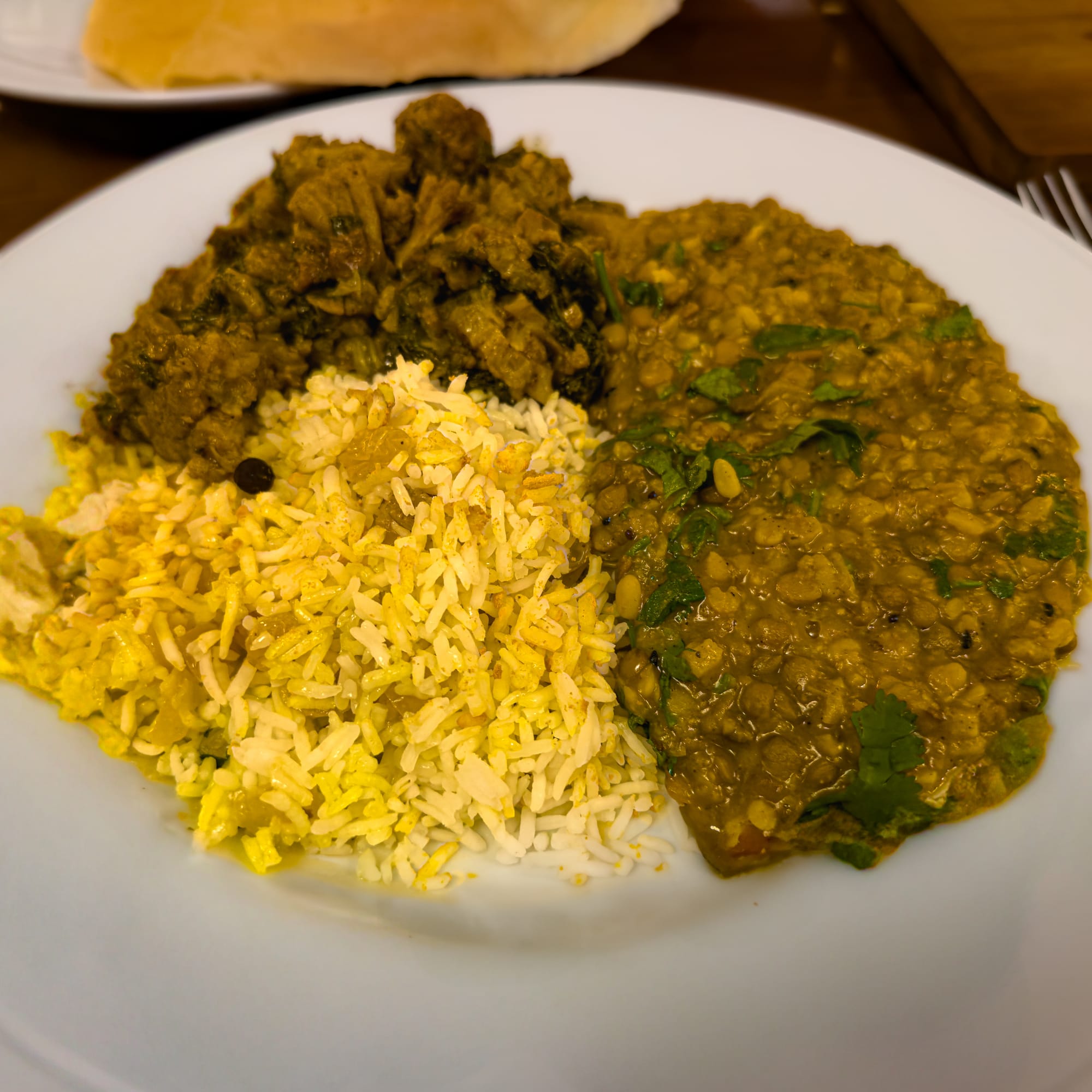
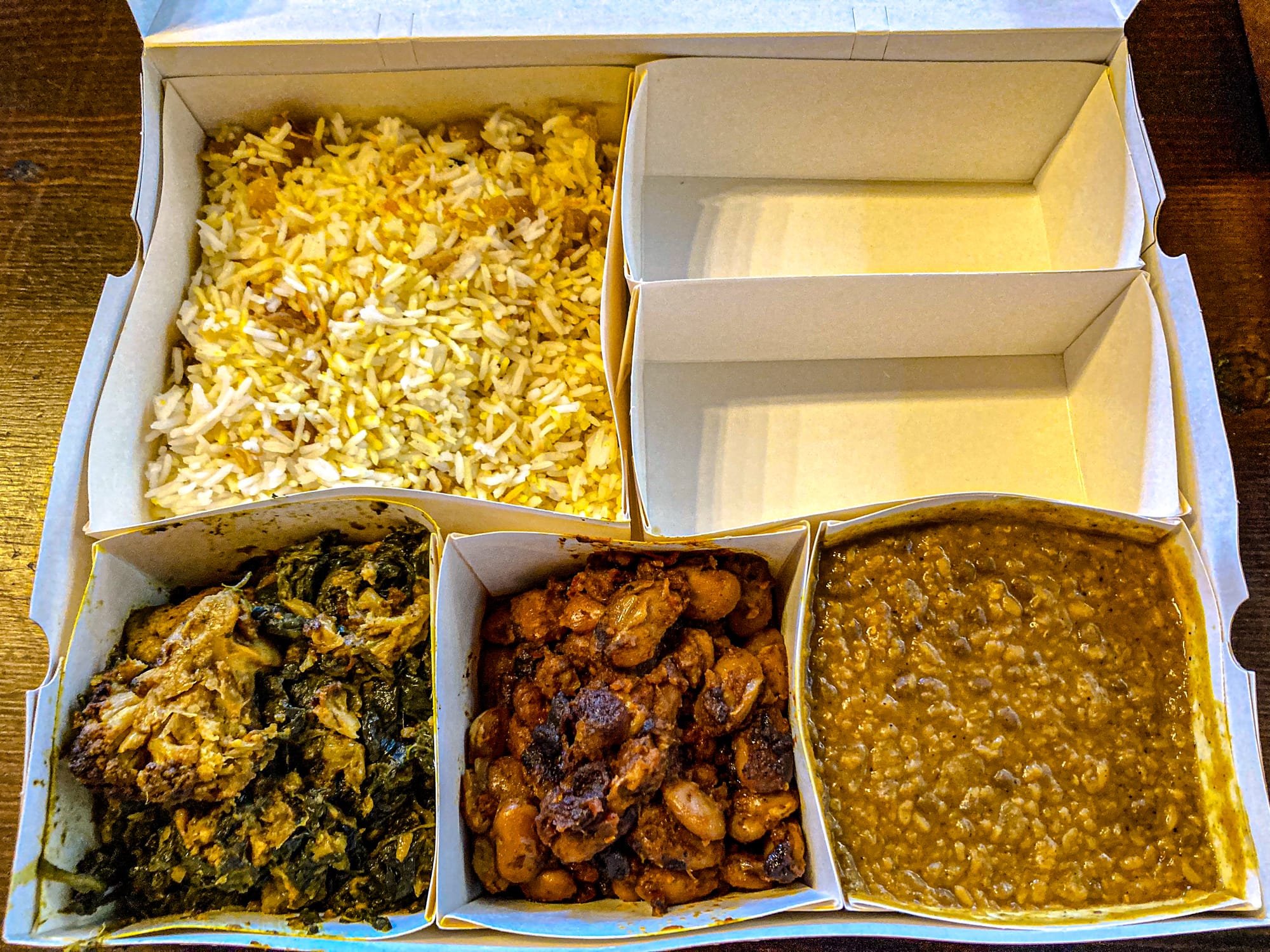
For nomads, these nights are a highlight of community life. They’re not just about eating well, but about gathering together—locals, newcomers, and long-timers all mixed in one place. If you’re in Bansko during summer, keep an eye on the WhatsApp groups for announcements. Curry night has become something of an institution here, a reminder that some of the best memories are made over food.
Take a cold plunge
A refreshing ritual for hot summers and sore muscles.
Cold plunging has become a favorite wellness practice in Bansko, especially during the warm summer months. Locals and nomads alike head to rivers or mountain-fed pools to immerse themselves in icy water, often pairing it with a run or hike. The initial shock quickly fades into a rush of clarity—your heart races, your body tingles, and suddenly the heat of the day feels a world away.
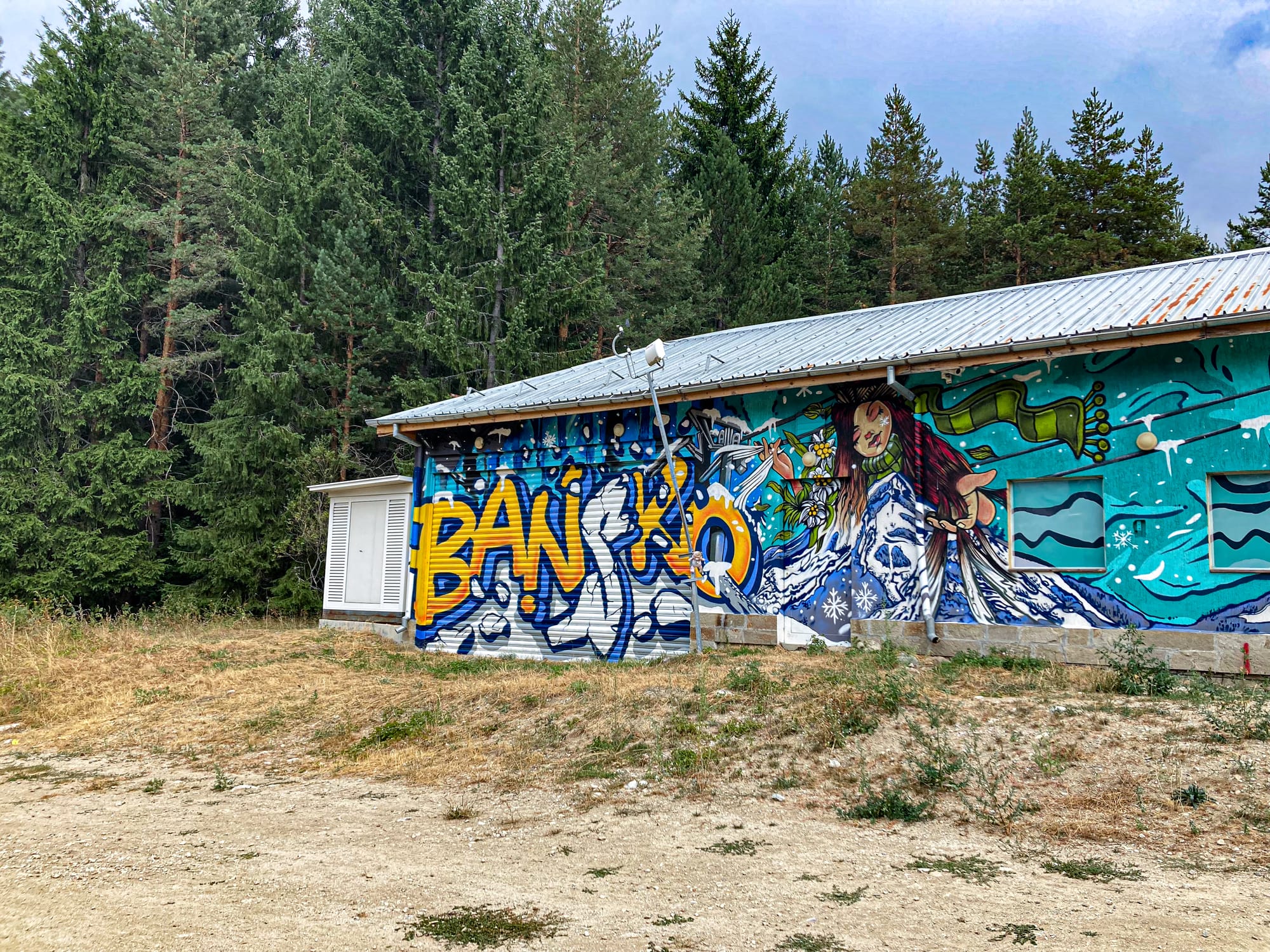
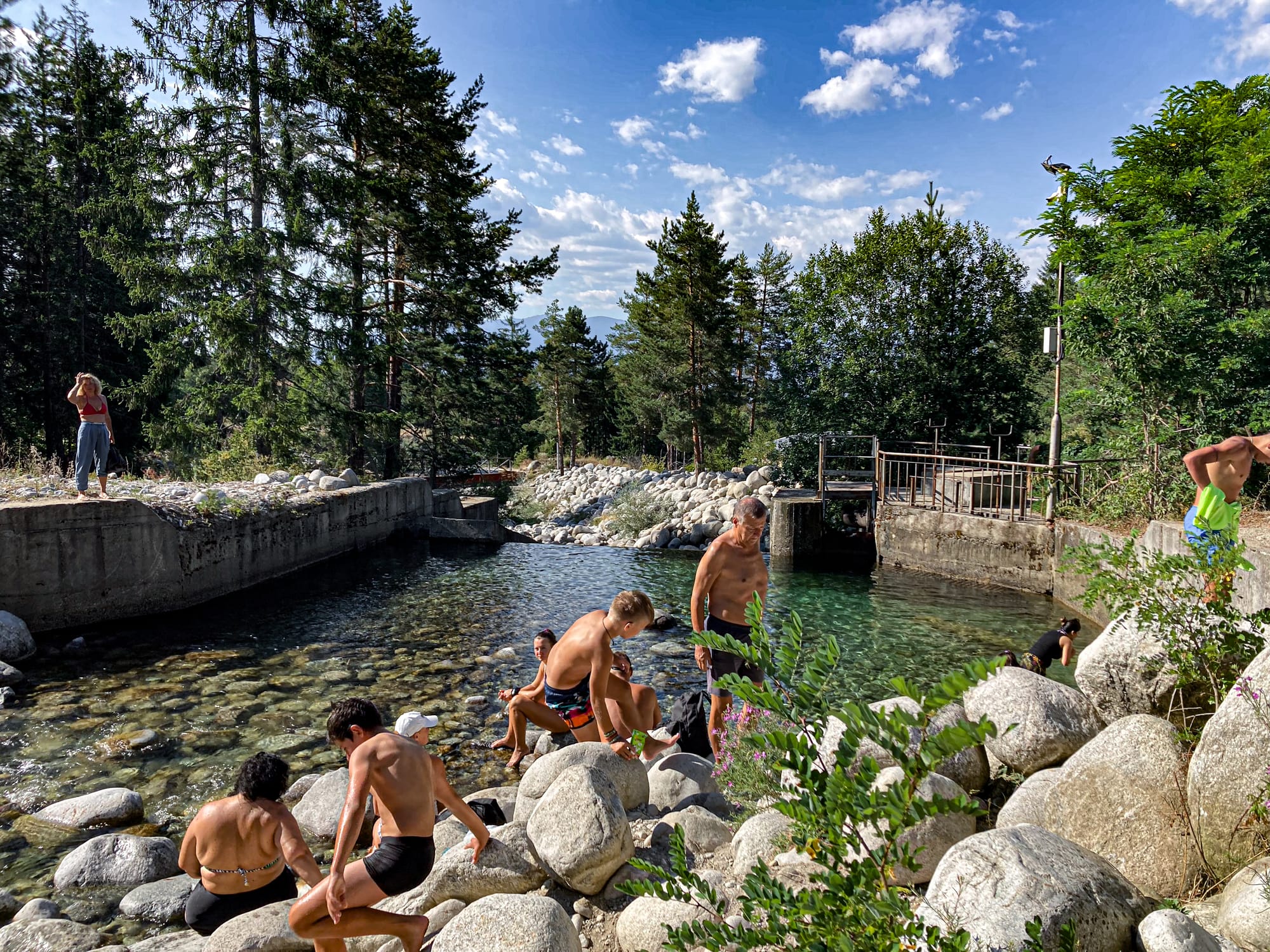
What makes it special is the simplicity. There’s no spa setting or elaborate setup, just crisp mountain water and the quiet beauty of nature around you. For those who spend long hours at a desk, a plunge offers a quick reset, both physically and mentally. It’s invigorating, communal, and one of those small rituals that end up shaping your Bansko experience.
Culture and local life
Explore the Old Town
Cobbled streets, stone houses, and traditional mehanas.
Bansko’s Old Town holds the traces of its National Revival heritage—narrow lanes lined with stone houses, courtyards tucked behind heavy gates, and the white bell tower of the Holy Trinity Church rising above it all. Walking here feels slower, more atmospheric, as if the past is never far from view. You’ll find small museums, workshops, and murals alongside the everyday rhythm of locals going about their lives.
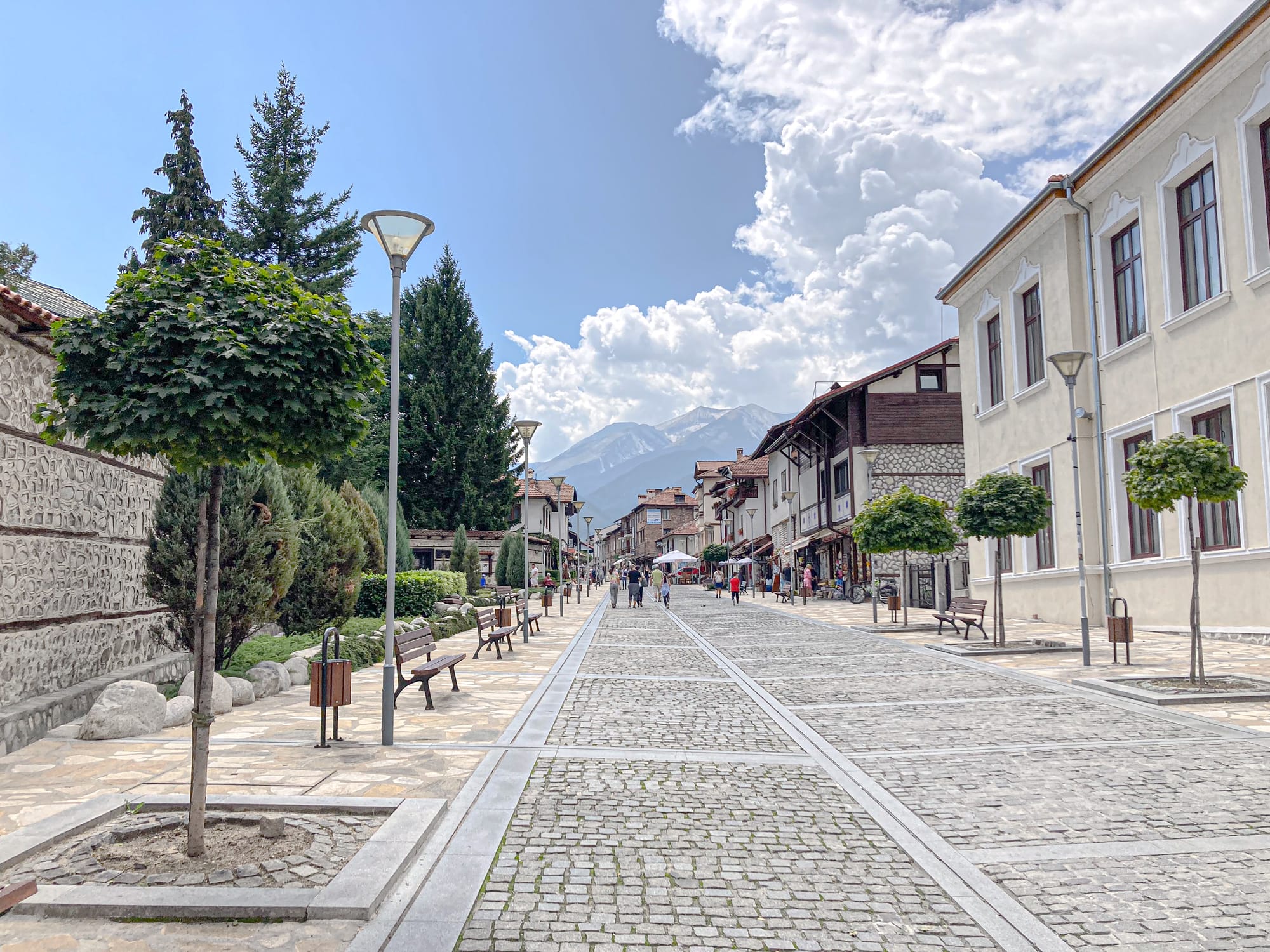
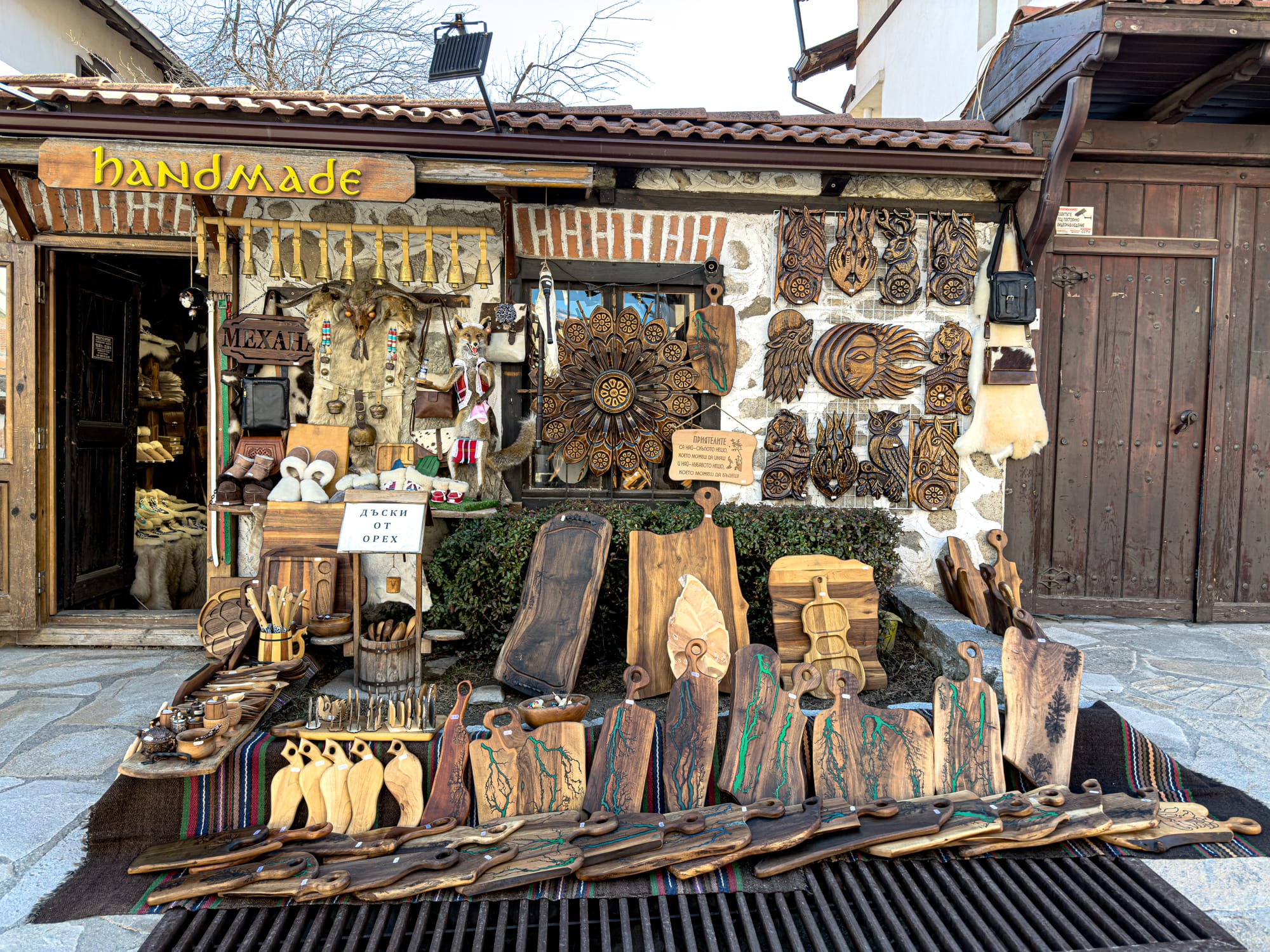
Evenings are when the Old Town shines. Traditional mehanas fill with music, firelight, and the smell of slow-cooked stews, while cobbled streets echo with conversation and laughter. For nomads, it’s not just a tourist zone but the cultural heart of Bansko—a place to wander, eat, and sink into the mountain town’s history and hospitality.
Visit Bansko’s Sunday market
Fresh produce, homemade goods, and a lively local buzz.
Every Sunday morning, Bansko’s market fills with the colors and smells of Bulgaria’s mountain harvest. Stalls overflow with fresh vegetables, cheeses, honey, herbs, and homemade jams, while vendors call out greetings to friends and customers alike. It’s busy but not overwhelming, and the atmosphere feels distinctly local—a weekly ritual as much as a shopping trip.
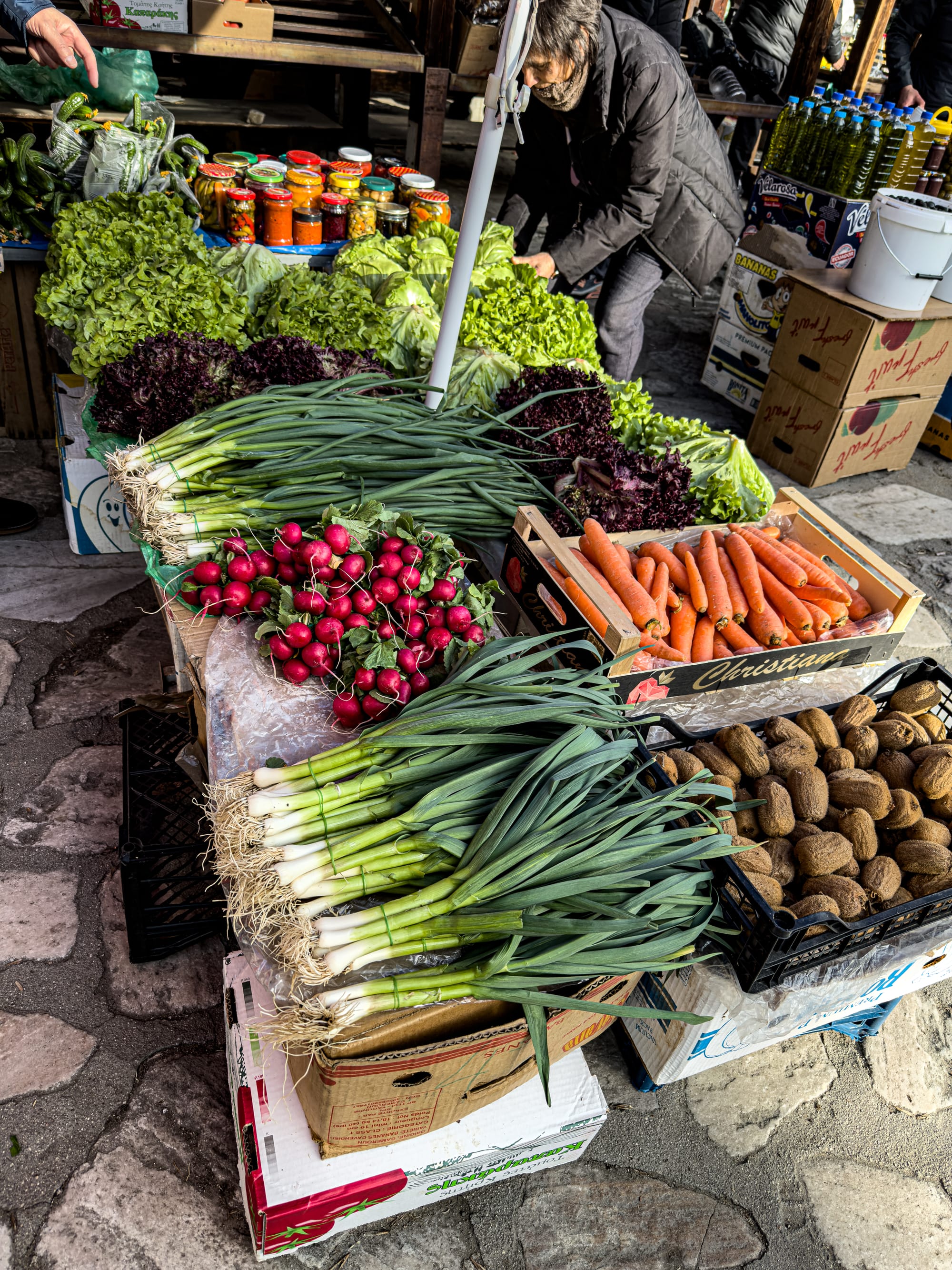
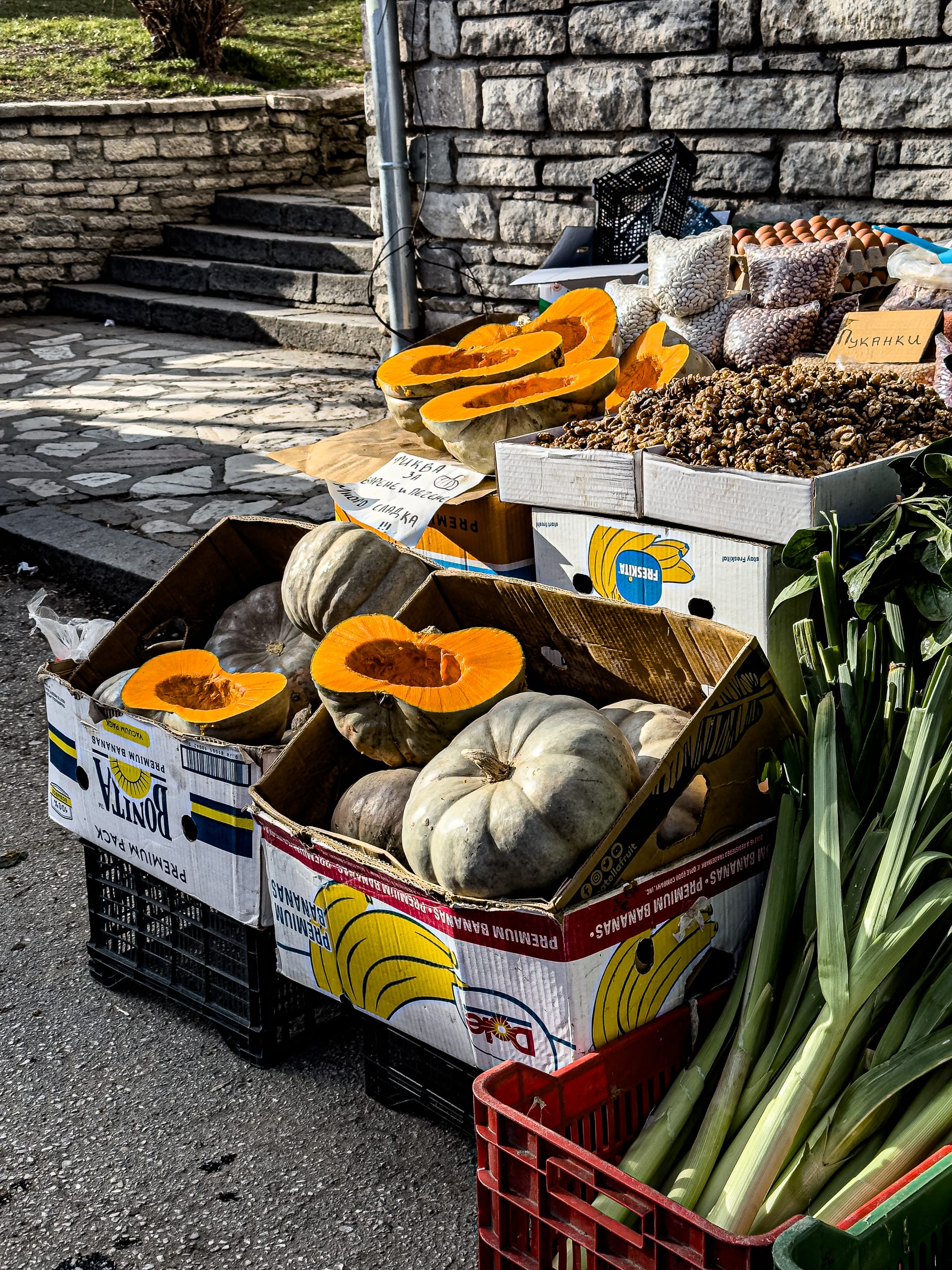
For nomads, the market is both practical and cultural. You can stock up on fresh ingredients for the week, sample regional specialties, or simply wander through with a coffee in hand, watching the rhythms of town life unfold.
Explore abandoned buildings
Echoes of Bulgaria’s recent past reclaimed by nature.
Bansko and the surrounding region are dotted with abandoned structures—old hotels, Soviet-era factories, and half-forgotten buildings slowly being overtaken by the elements. For photographers, they’re atmospheric playgrounds: peeling paint, broken windows framing mountain views, stairwells spiraling into shadow. Each site tells a quiet story about the transitions Bulgaria has passed through in recent decades.
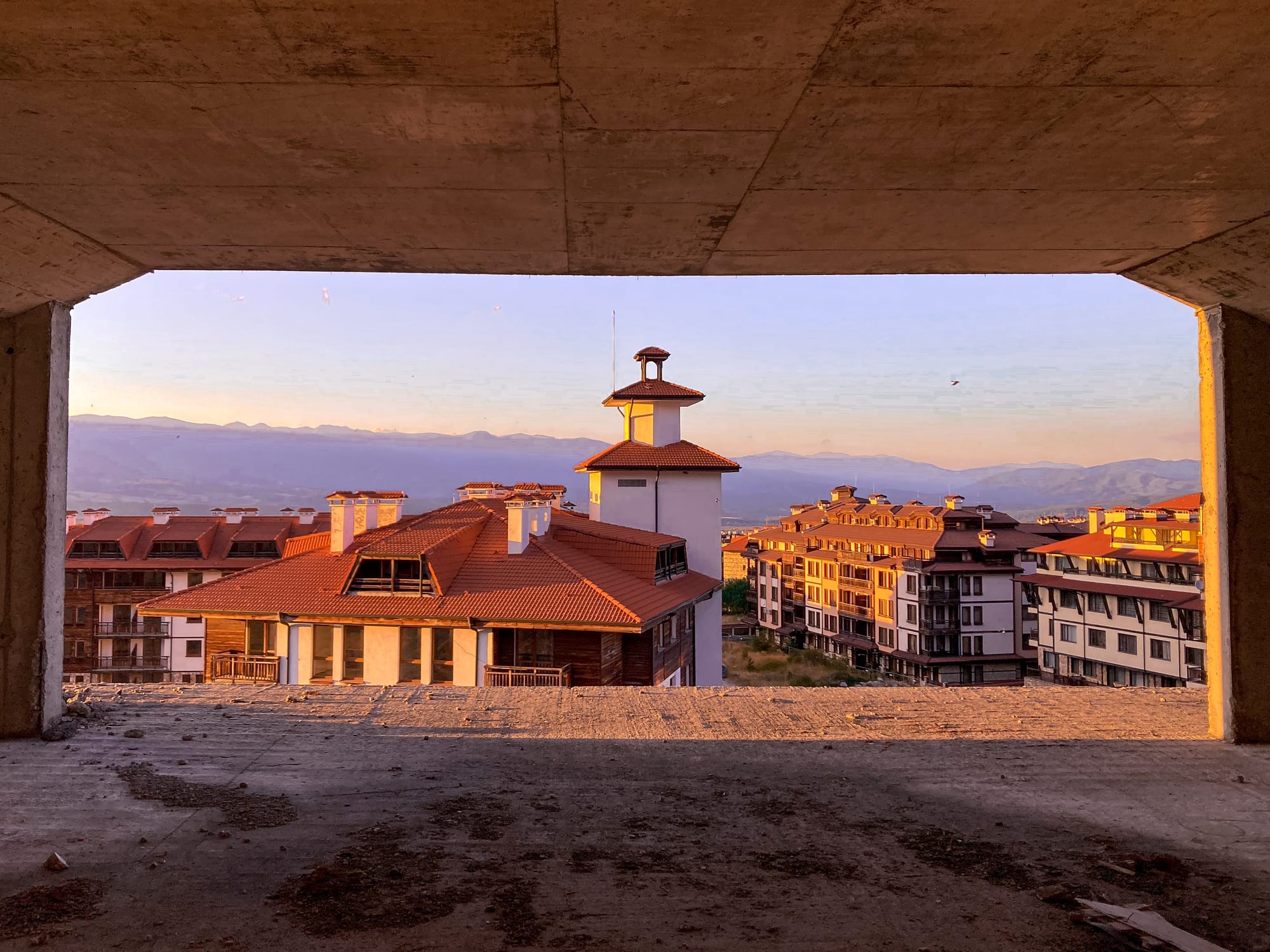
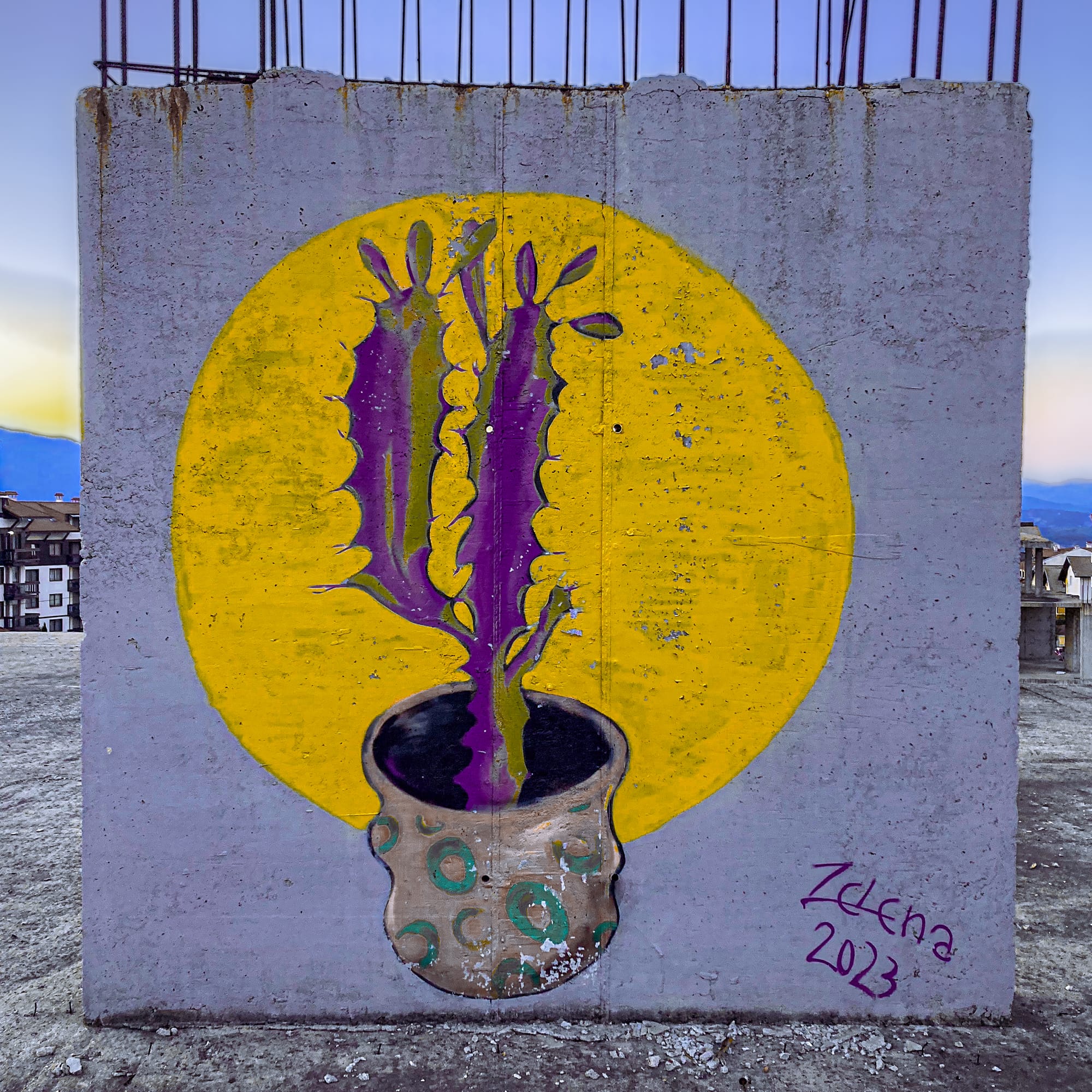
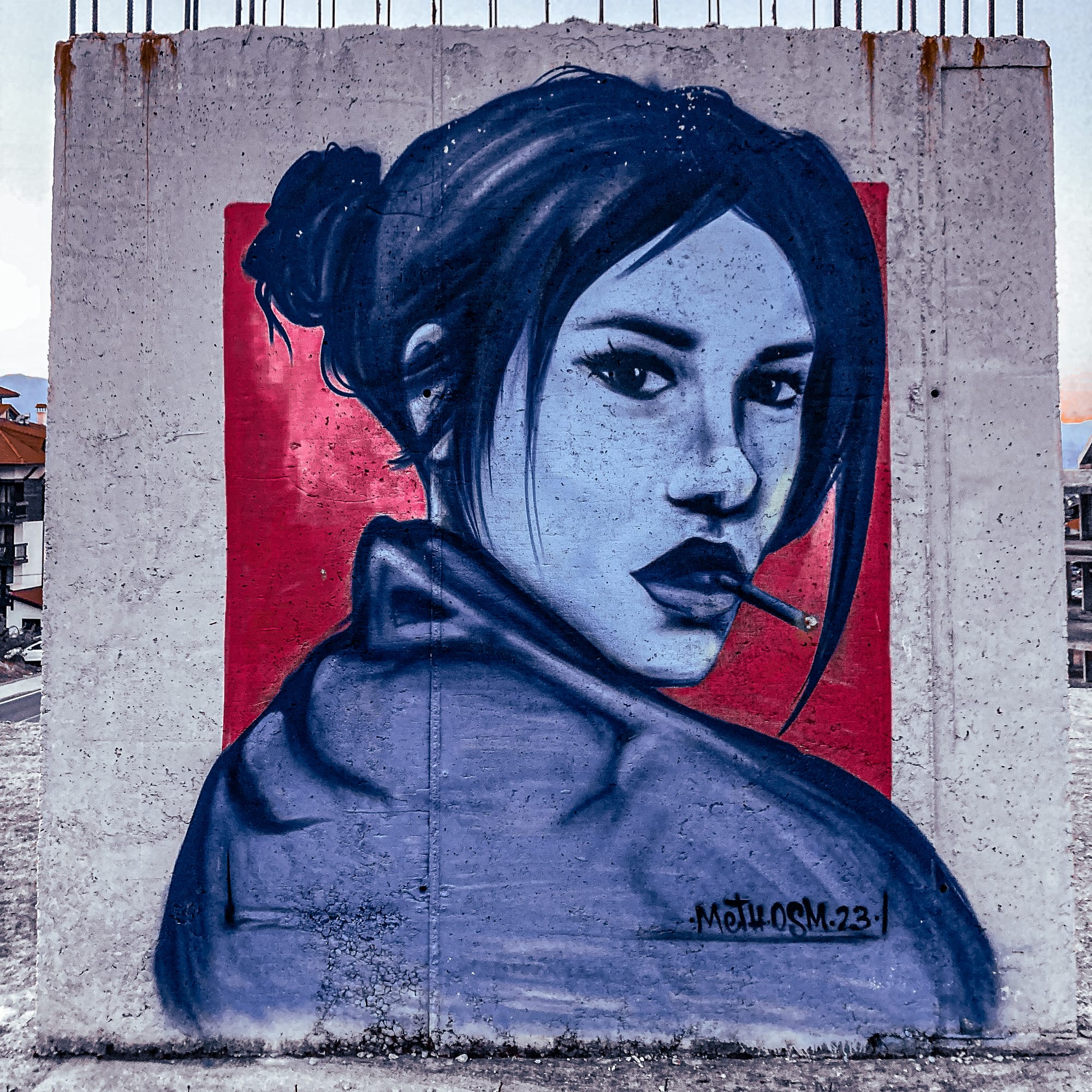
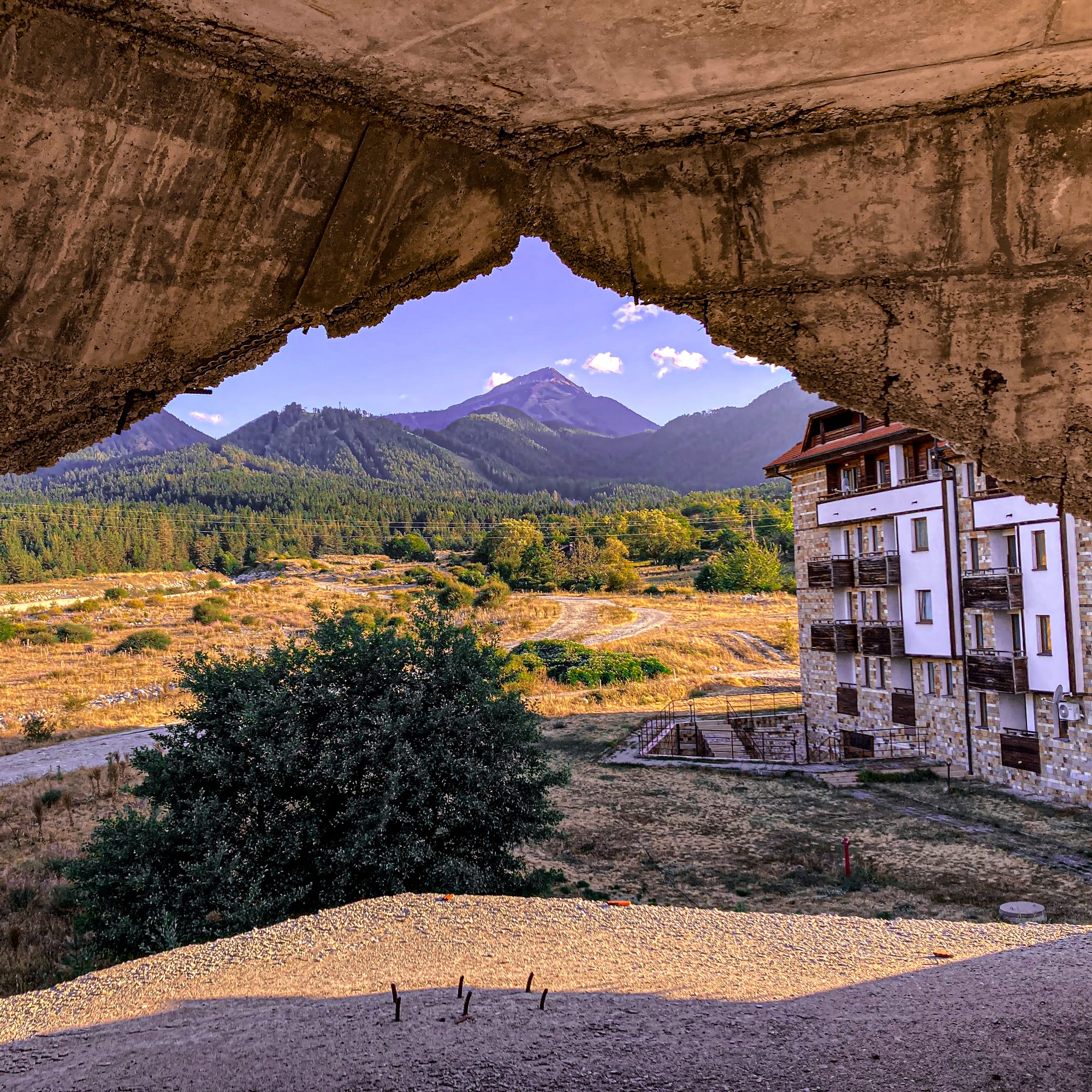
Exploring these places isn’t about polished attractions, but about curiosity and mood. Some are easy to stumble across on the edge of town, others require a little local knowledge or nomad whisper network. Walk through with respect, and you’ll find spaces that feel both eerie and strangely beautiful.
Find “The Secret Hotel”
An abandoned landmark turned nomad legend.
Whispered about in Bansko’s nomad circles, the so-called “Secret Hotel” is an abandoned complex on the edge of town that has taken on near-mythic status. Its shell looms empty, windows dark, staircases exposed, and nature slowly reclaiming the site. Seen from the outside, it’s striking in its scale and atmosphere—a reminder of Bulgaria’s recent past and the fleeting nature of ambition.
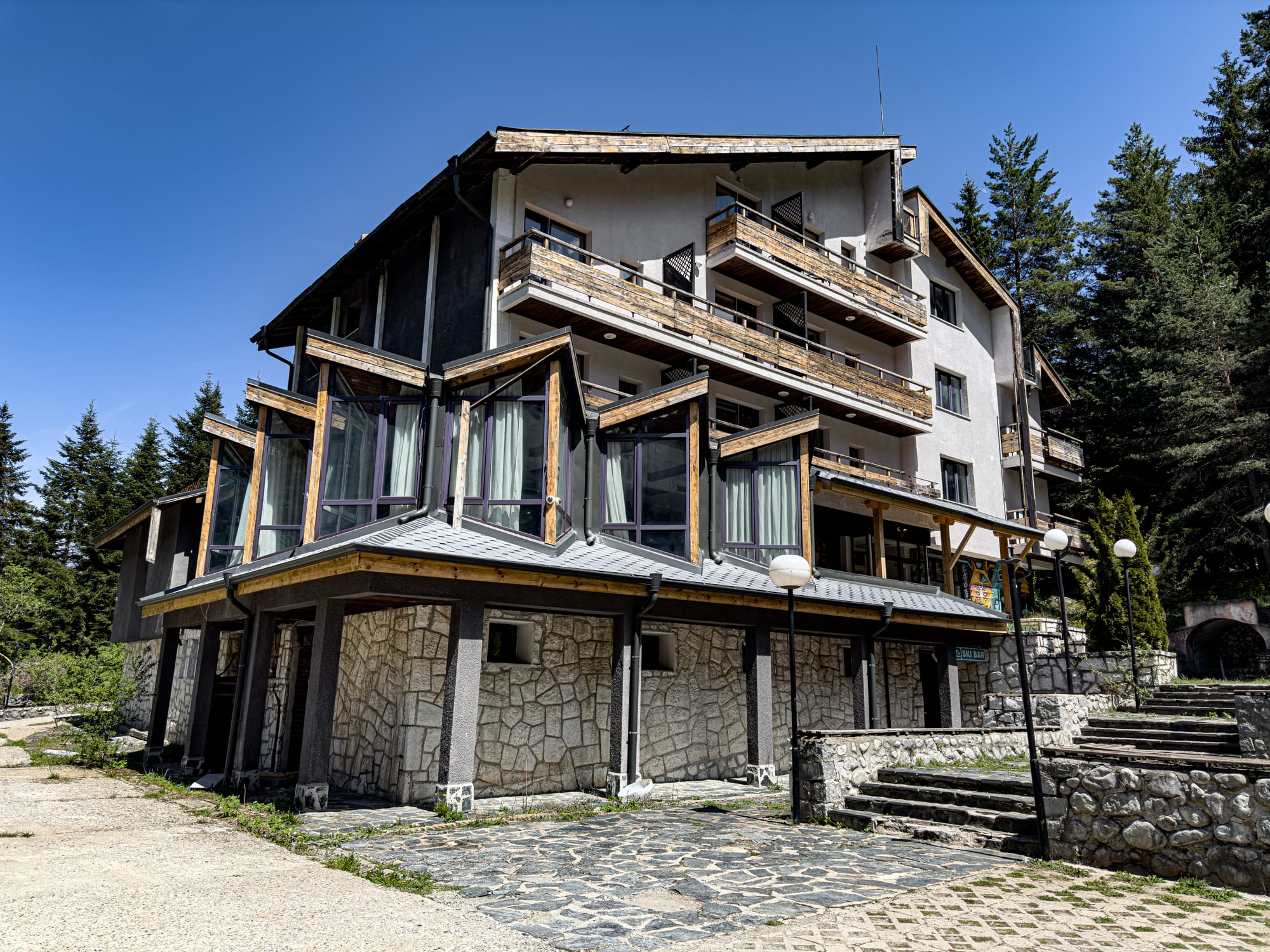
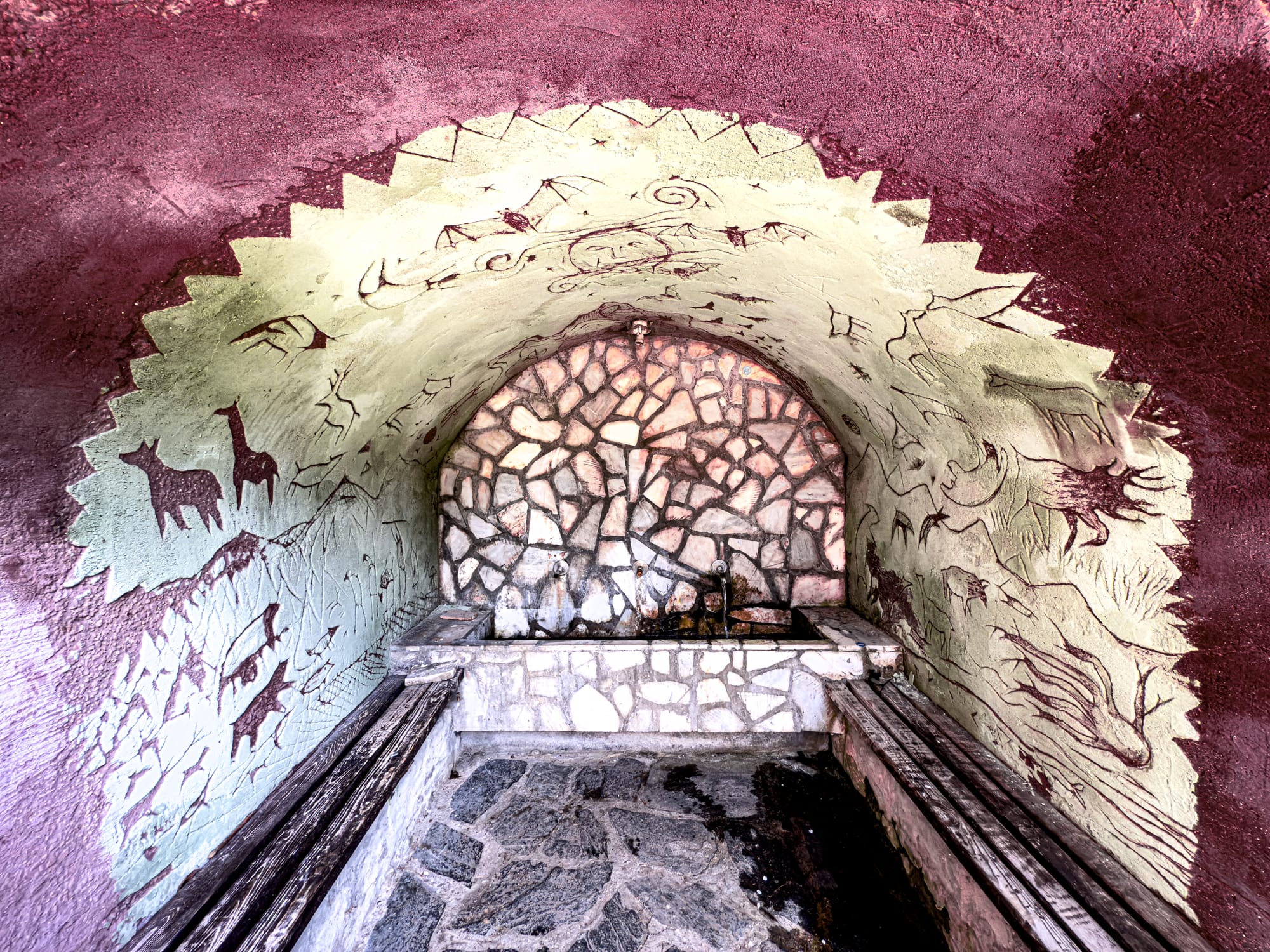
Part of its allure is the way it circulates through word-of-mouth, half-jokingly mentioned in community chats or at dinner tables. Nobody goes inside, but many wander by just to glimpse it, to feel the strange mix of decay and beauty that gives the place its reputation. The Secret Hotel isn’t a destination in the usual sense—it’s a piece of Bansko folklore, something you notice on the margins and carry away as part of the town’s layered texture.
Take a weekend trip to Melnik
Sandstone cliffs, historic wine cellars, and timeless streets.
Just over an hour from Bansko, Melnik is Bulgaria’s smallest town—and one of its most atmospheric. Tucked beneath dramatic sandstone formations known as the Melnik Pyramids, the town feels like it belongs to another era. Narrow cobbled streets wind between old stone houses and tiny chapels, with mountain views framing every turn. It’s quiet, charming, and compact enough to explore in a single afternoon.
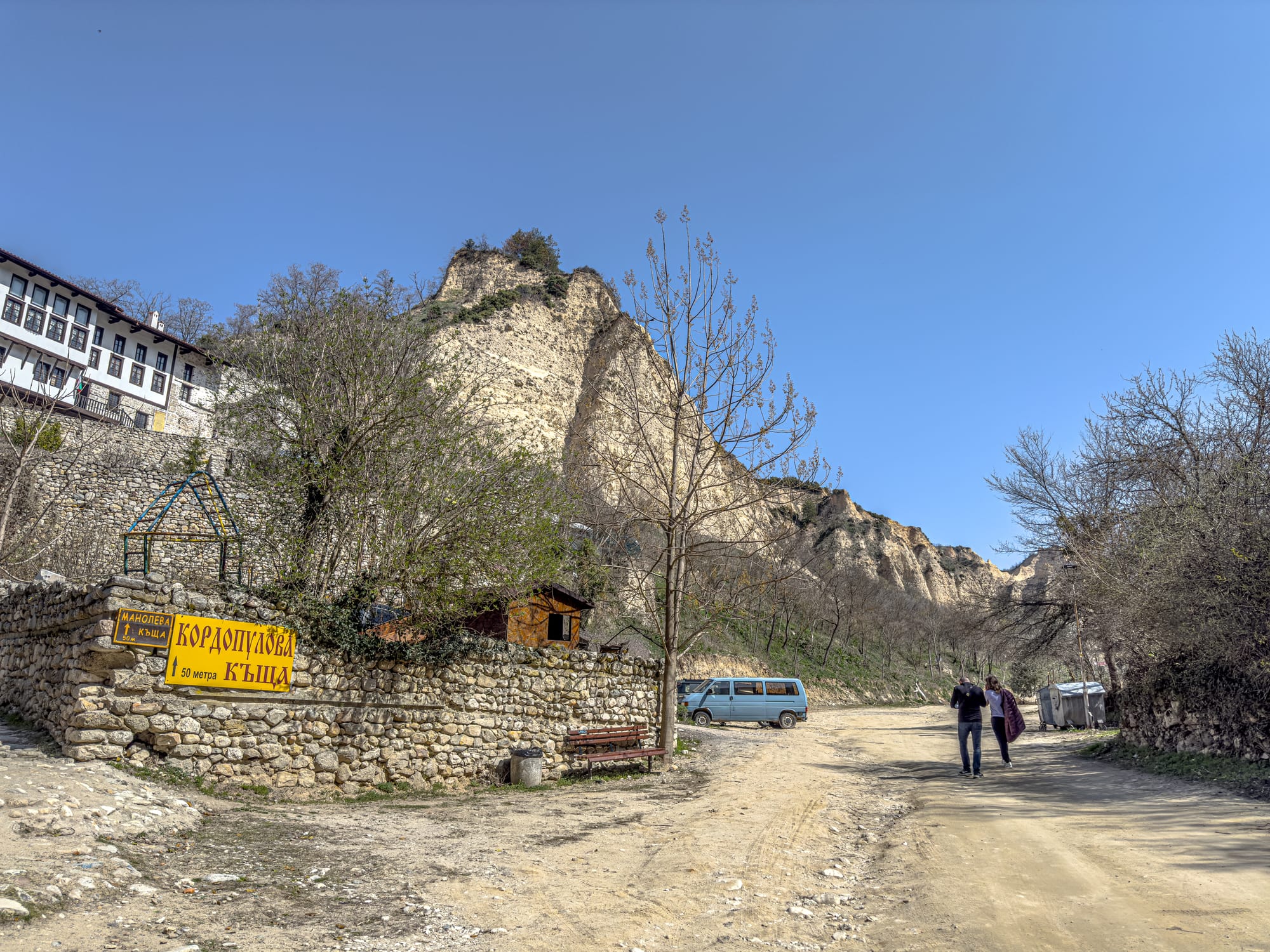
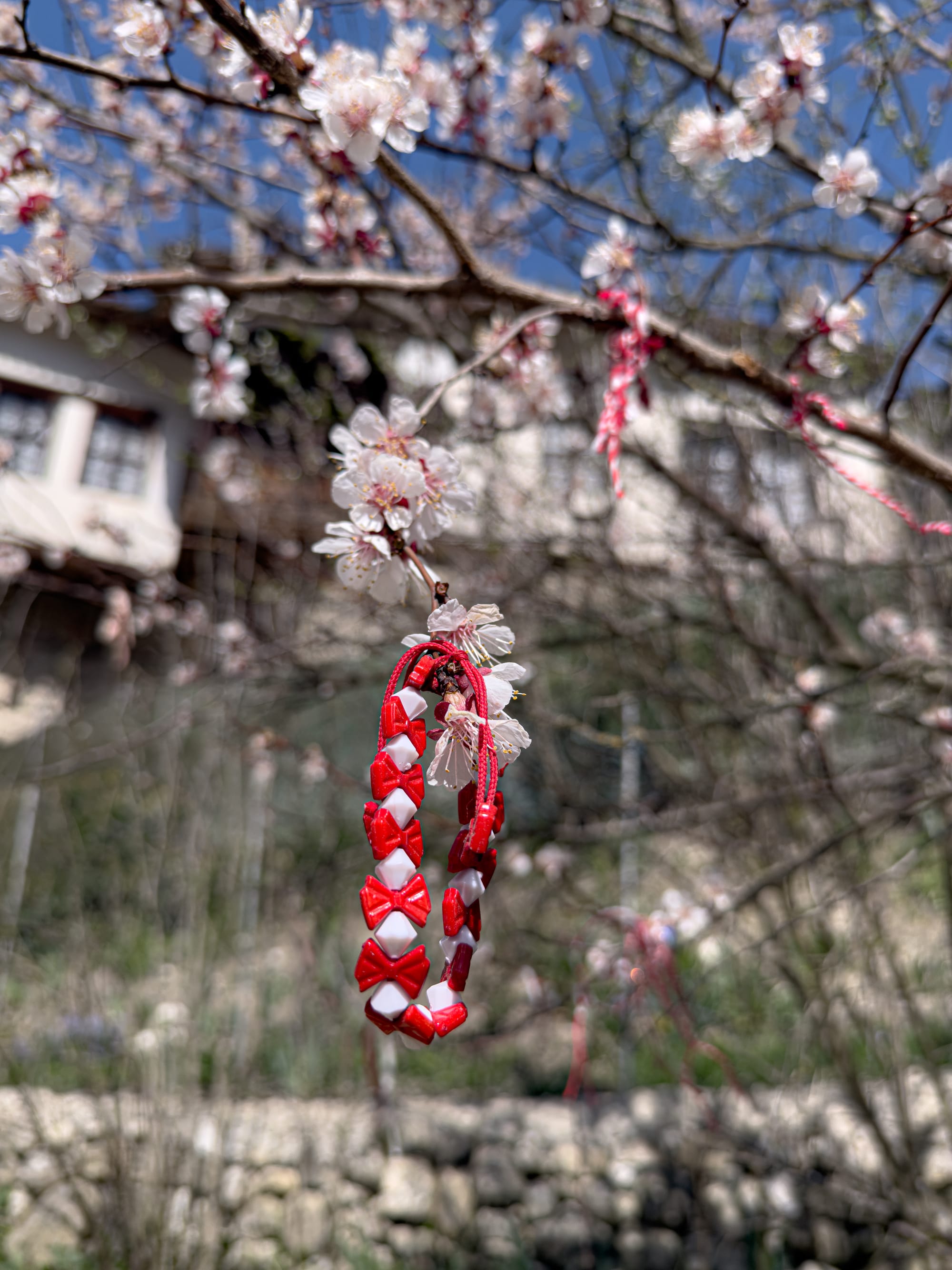
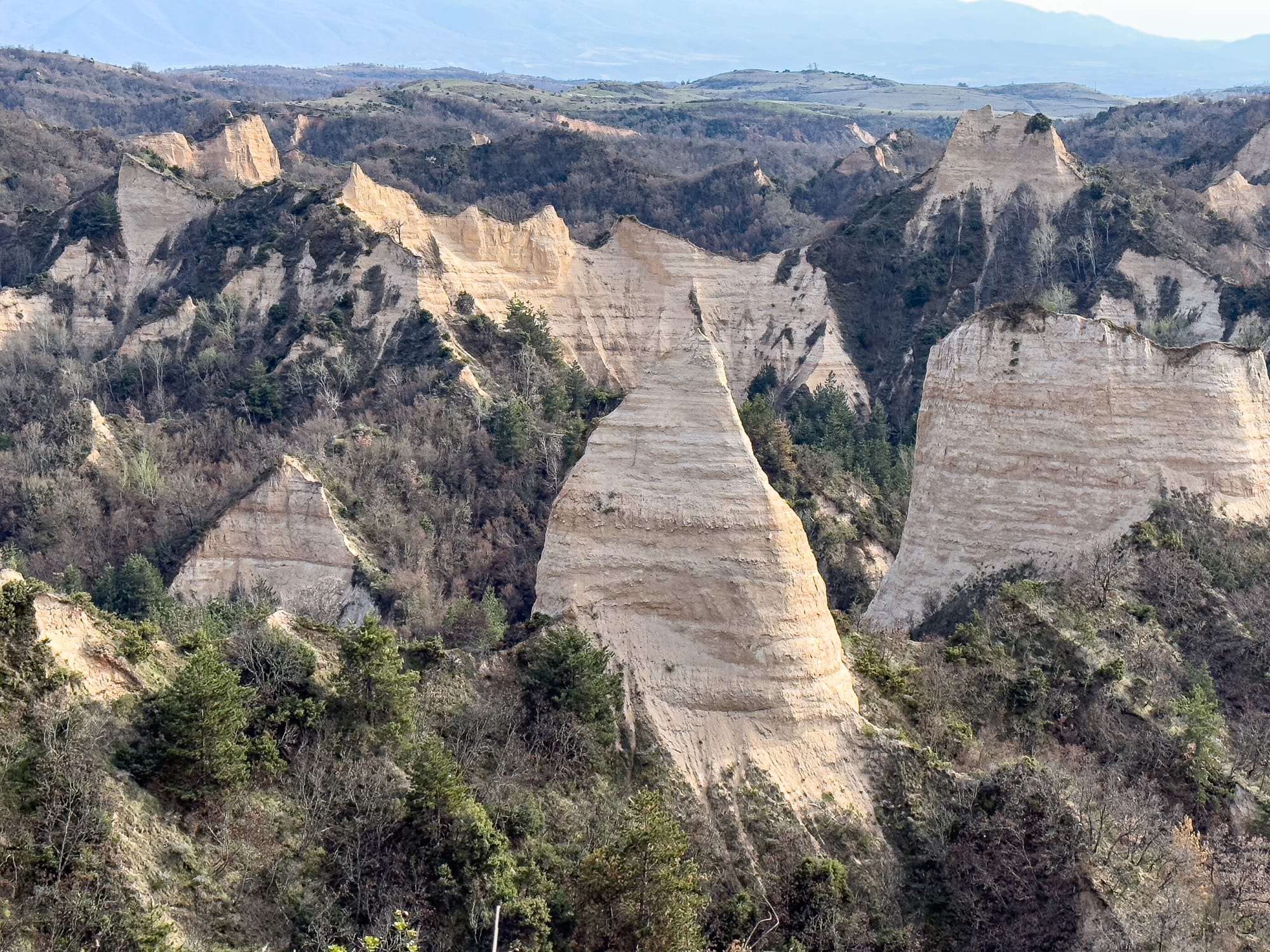
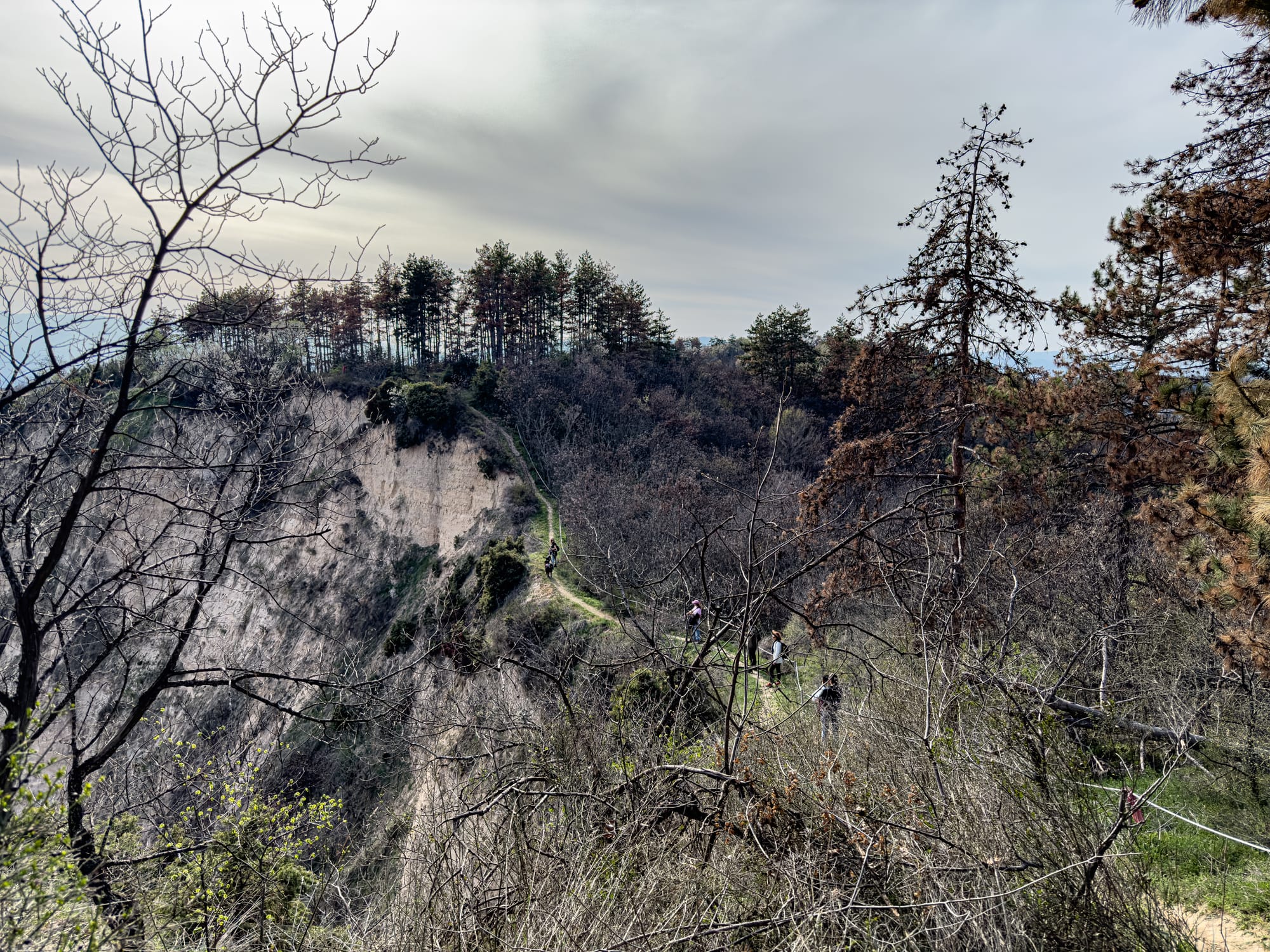
What makes Melnik special is its winemaking tradition. Historic cellars carved into the cliffs have produced deep reds for centuries, and many are still open for tastings today. Pair that with rustic tavern meals, a visit to the Kordopulov House (one of the best-preserved Revival-era mansions), or a short hike into the sandstone hills, and you have a weekend that blends culture, landscape, and slow living in perfect measure.
Essential tools for Bansko
For nomads living and working from Bansko, these tools made our stay smoother.
Saily Global eSIM
Instant global mobile data without needing a local SIM. Saily global eSIM gives you mobile data in Bulgaria and dozens of other countries—no need to buy a separate local SIM when you arrive. Great for digital nomads who hop between places and want one seamless solution that works everywhere.
SafetyWing (global health & travel insurance)
An affordable, digital-nomad-friendly insurance plan that covers both travel hiccups and medical needs. We like that it runs month-to-month and can be started even if you’re already abroad. Helpful for peace of mind, especially on remote islands where care may require transfers or added costs.
NordVPN
A lightweight, fast VPN that lets you secure your connection on public wifi—especially important when working from colivings, cafes, or airports. It also lets you access content as if you were back home, which is helpful for banking, streaming, or logging into sensitive accounts.
Wise (multi-currency payments)
Our favorite banking solution for multi-currency payments and avoiding bad exchange rates. Wise lets you pay in Euro locally and manage funds across dozens of currencies. We used it to split group dinners, pay for tours, and withdraw cash without the large fees traditional banks charge.
Should you choose Bansko?
Bansko is one of the most established digital nomad hubs in Europe, and it feels unique because it’s set not in a capital city or on a beach, but in a mountain town. Life here combines a large, welcoming nomad community with stunning natural surroundings, seasonal rhythms, and an affordability that’s hard to match. If you want connection, wholesome living, and the balance of coworking and hiking trails, Bansko is an excellent choice.
The pros?
- A large, varied digital nomad community with daily events and a low barrier to entry
- Multiple colivings and coworking spaces, each with its own character
- Affordable cost of living compared to much of Europe
- Stunning mountain setting with year-round access to skiing, hiking, and hot springs
- Seasonal festivals, including the Bansko Nomad Fest
- Walkable town where everything is within easy reach
The trade-offs?
- No direct airport—reaching Bansko requires a 2.5-hour drive from Sofia
- Tourist crowds in peak ski season (January–February)
- It can feel too small at times
- Vegans might struggle, but there are some options
- Winters can feel long and cold if you’re not into snow sports
- As Bulgaria is now in the Schengen area, non-EU citizens need to plan carefully around stay limits
Bansko is for those who want scale of community without sprawl. If you thrive on wholesome mountain living, and like your workdays balanced by skiing, hiking, or shared meals, it’s one of the strongest bases in Europe.
Read more
If you’re curious about how to make Bansko work for you, we’ve written extensively about our experience. Check out our Bansko guides for more information on what we enjoyed in the region.






